Timer for F2D Combat
Electro Mechanical Clock
First published: 27/3 2015 - Last update: 1/8 2016 - By Henning Forbech
|
Background: It is a demanding job to judge at a combat competition. What seem to be relative simple tasks are to time the match. Traditional this has been done by the Circle Marshal. He starts the official stop watch and the match when the pilots are ready to start. During the match the Circle Marshal not only has to be aware of the pilot's behavior but he must also keep track of the time. Especially at the end of the match this can be very tricky job. If a model at the end of a match comes back into the air after a landing the pilots are very upset to continue the match. But right at this time the Circle Marshal also have to keep an eye on the stop watch an warn the timekeepers that the match is about to end. Sometimes pilots loses the chance of a last moment attack because the Circle Marshal is so busy with time keeping that he delay or even forget to restart the match. Vision: The vision for this project was to make the job easier for the officials by letting an automatically "Combat Timer" keep track of the time. The official time for the combat matches should be shown on a big display, visible for everybody at the flying field. By automating some of the trivial tasks it should be possible to reduce the work load on the judges. This should give the judges more time to focus on pilot's behavior and security. When the time is made visible to pilots, mechanics, officials and spectators it should be more interesting to follow the matches at competitions. |
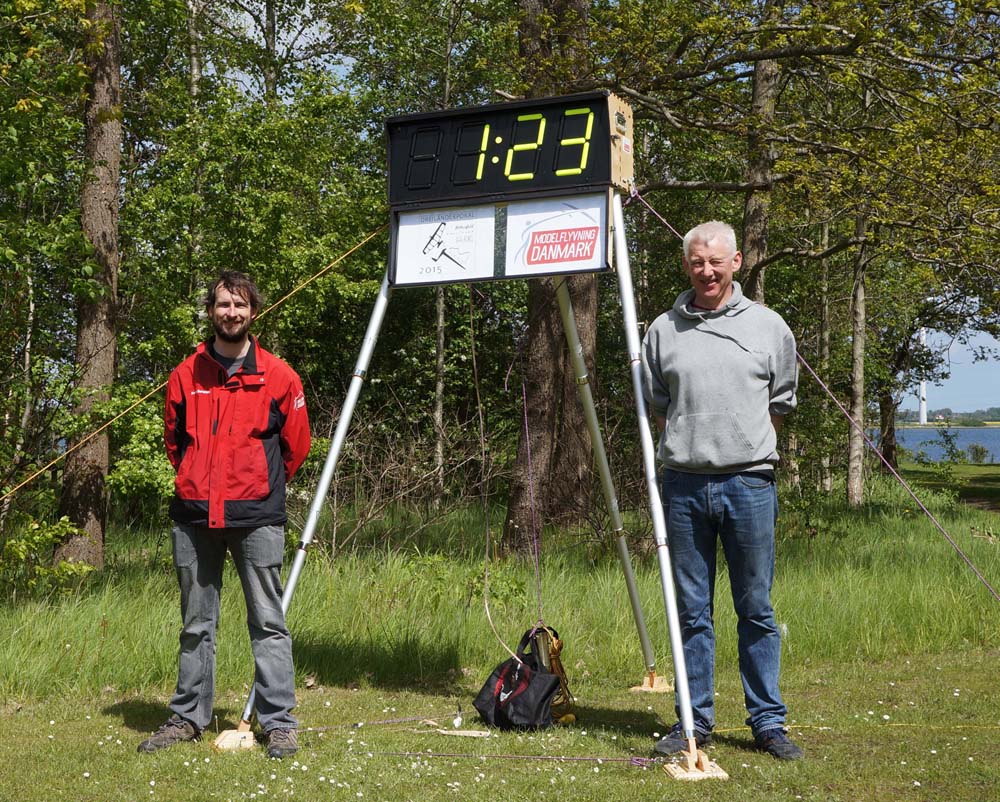
Rules on timing in F2D: 4.4.9.e 4.4.9.f 4.4.9.o 4.4.9.a | ||
|
|
|||
|
Concept: The basic design of the Combat Timer would be a big display showing time for the match. The Timer shall be operated by the officials and it should be possible for all persons at the flying field to follow the time. It should be easy to put up the Timer and it should be able to run in "island mode" without power supply for a weekend. The Timer should be visible and able to operate under all condition where it would ever make sense to fly combat. The program and control for the Timer is based on an Arduino microcomputer. The Timer shall be designed and made as "open source" and all information on the hardware and software shall be published to make it possible for anybody to build their own version Timer. Basic function of the Timer: The Timer will start and end matches. The time recorded by the Timer will be the official time for the match. Time keepers will still count the cuts and register the air time for each pilot The Circle Marshal will only activate the timer when he wants to start a match and if he has to end a match before the 4 minute limit. The Timers will automatic stop the match at the 4 minute maximum. Count downs and signal to start/stop will be given automatically by the Timer. Display design: Displaying the time to all people on a flying field require a big and clear display. The display would need to be well outside the service circle but also above mechanics and officials. The viewing distance for pilots would be 25-30 meter but mechanics and spectators will often have to view the display in a distance of 60 meter or more. The display should be visible and clear in both clear sunshine, low light conditions and from a very narrow side angle. A simple watch with a rotating "arm" would be easy to build but it would not be able to show the time with high enough accuracy A digital display with large 7-secments would have the necessary precision but it would not be visible in direct sunshine. Below is some examples of clocks and displays used at combat competition |
Index: Background Vision Concept Examples Design Proof of Concept Sponsor Building the Timer Operation First competition Sound System Sebnitz World Cup Riga World Cups European Championships World Air Games in Dubai Update, Winter 2016 Future updates |
||
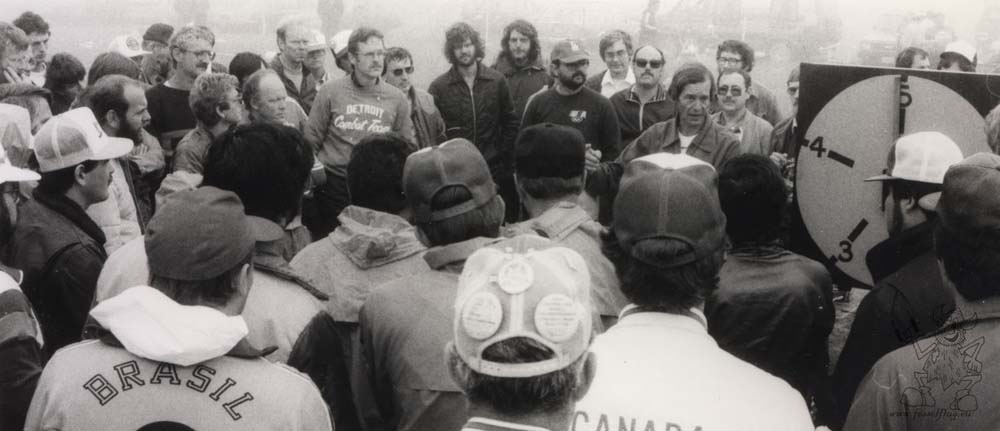 A mechanical timer from a time long gone. The clock is simple and visible, but do not have the necessary precision. 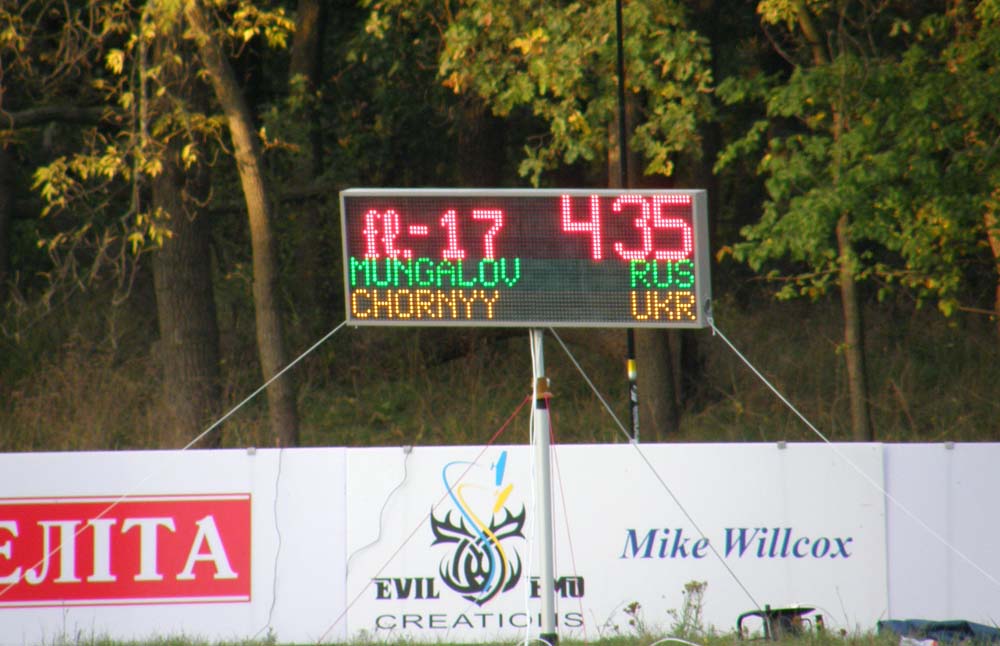 Electronic display used at the F2D World Cup in Novomoskovs, Ukraine During the match the display show the time and the names of the pilots 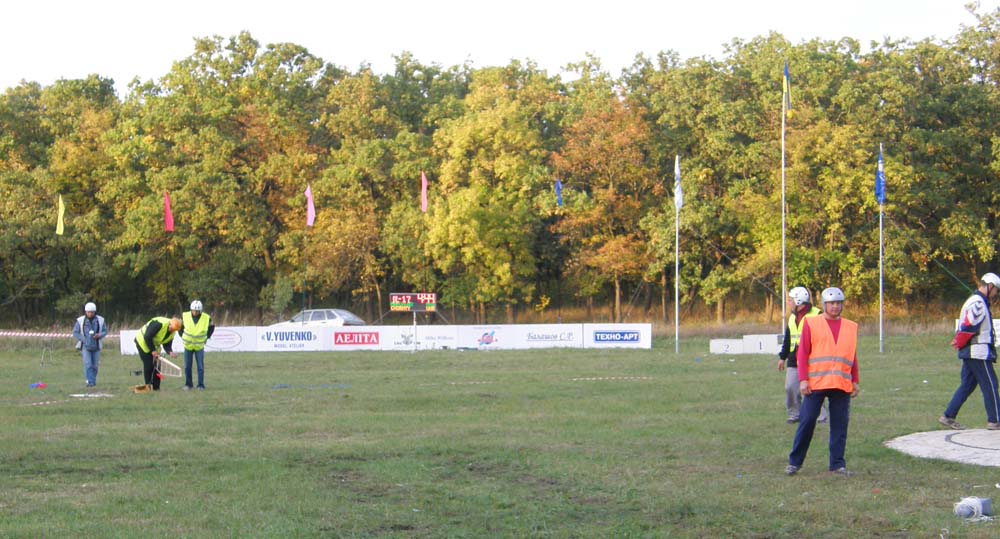 The display in action during a combat match. In direct sun shine it would probably be difficult to see the display clearly enough. A timer used in Russia 2015. Photo by: evgen151 |
|||
|
|
|||
|
Design: The digits in the display must be at least 25 cm high to be visible around the flying site. The display must be mechanical to be visible under all kinds of weather and light conditions. One of the challengers for a Timer is the power supply. Combat events are often located at places far away from the power grid so the power consumption was a critical parameter. The Timer should be able to run for a weekend from a 12V car battery. There are some existing mechanical display systems that could be used for the Combat Timer. Displays with mechanical 7-segments are typical used at gas stations but these types of displays are far too slow for a clock showing seconds. Some mechanical displays have magnetic activators but these systems have high power consumption and switching all elements in a display at one time will generate a very high current spike. We did not find any existing systems that could fulfil our specifications so we decided to design and build our own system. Oure choice was to build the elements in the 7-segments as a rotating cylinder. The cylinder is painted black on one side and florescent yellow on the other side. The elements were designed to be rotated by a simple mini servo (as known from small radio controlled airplanes). To make the element change more swiftly the rotating speed is enhanced by letting the servo act on the rotor through a pinion in a slide on the rotor. This speed up the rotation of the cylinder but leaves the servo free of load at the end points. This design also reduced the start torque on the servo and it made the stop position of the servo uncritical. To bring down the weight of the rotating masses the rotating element was designed for 3D printing. 3D printing made it simple to design the rotating elements with support for bearings and other details. The support for the rotating cylinder and the mini servo was also designed for 3D printing. The back plates for the 7-secments and the box for the Timer was designed to be laser cut from plywood. By a widely use of taps and slots all parts could easily be assembled. Almost like building with LEGO. To make it easier to build and replace the parts in the Timer the components was designed as modules. If a module got some malfunctions it could be replace by another module. The modular design would also make it possible to redesign and update parts of the Timer in the future. The 28 servos in the Timer are controlled by an Arduino microcomputer. All critical electric components are built into a sealed plastic box inside the display box. The display modules are connected with 9 pin D-sub connectors inside the box. Connections to the battery and the sound system is done thorough a connecter bay in the bottom of the box. In this bay there are also some switches for starting the system and to adjust the sound level. There is also a 24 pin D-sub connector to run the display from a computer. Three telescope legs are used to raise the display above mechanics, officials and other persons who could block the view. The display is connected to the car battery with a chain. The heavy car battery is acting as an anchor for the display and help to stabilize the Timer in strong wind. |
Examples of mechanical displays: Alfa-Zeta Score Tronics Staver 402L Vane Display 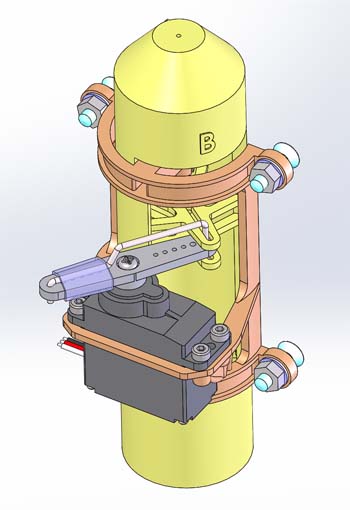 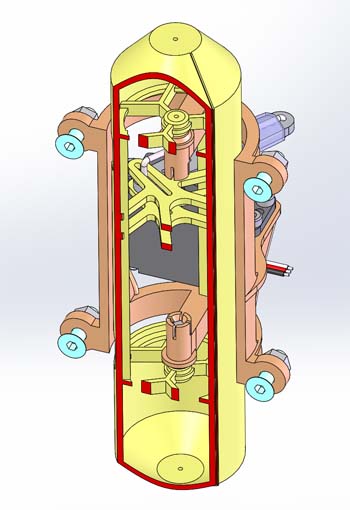
|
||
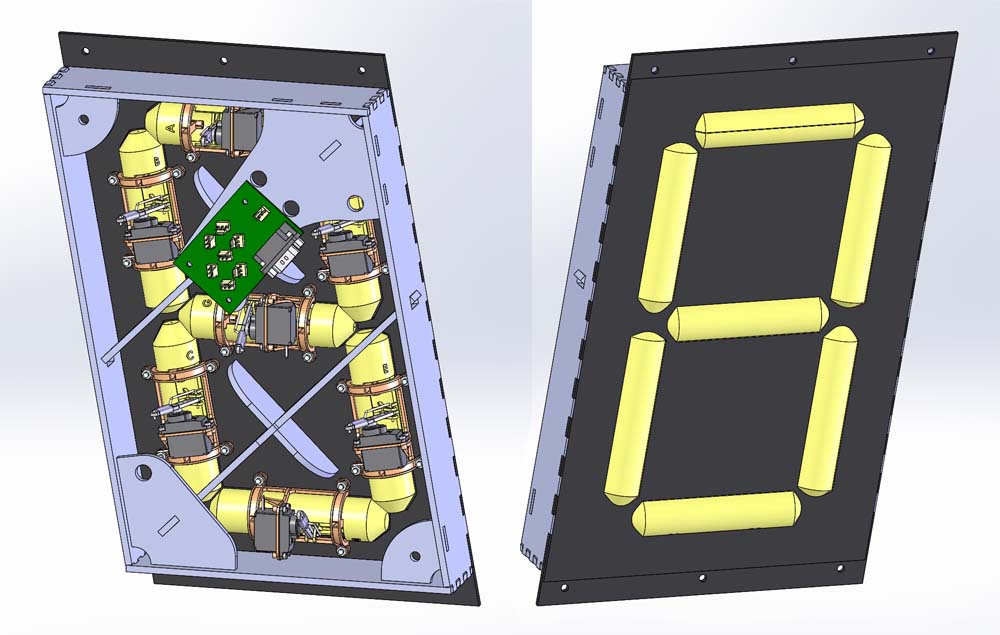 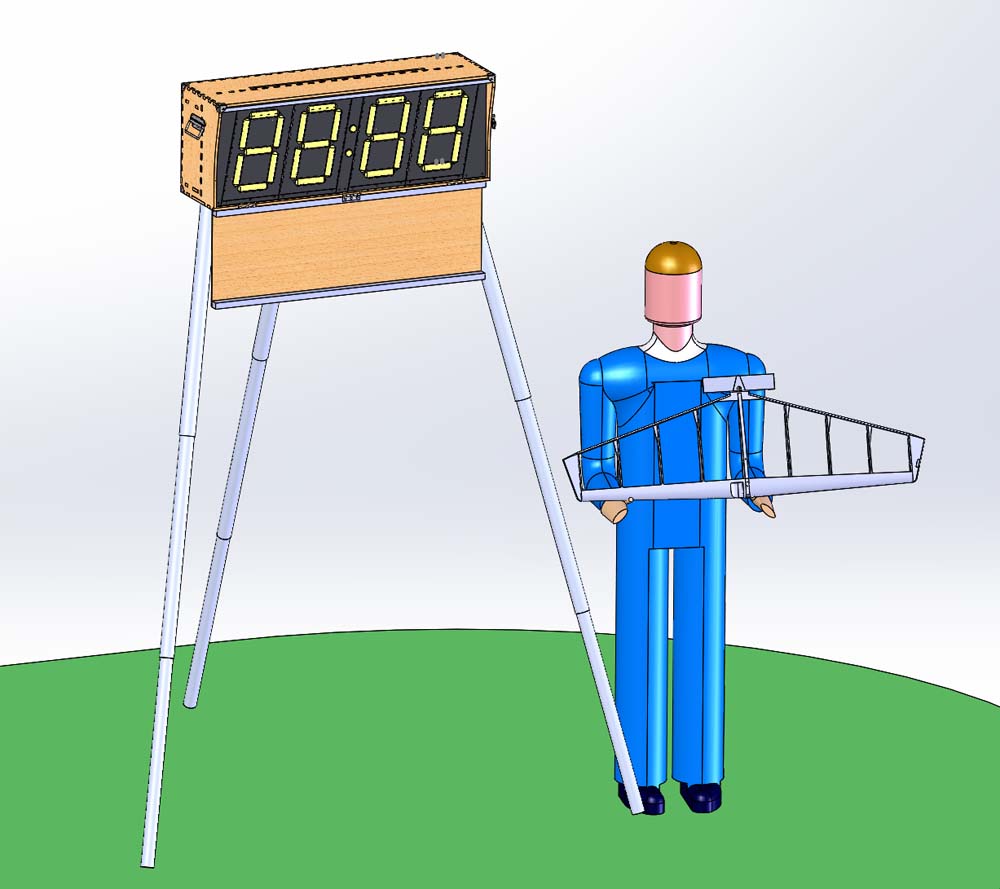
|
|||
|
|
|||
|
CAD Design: All parts for the Timer was drawn in 3D with the CAD program SolidWorks 2015. Function and assembling was tested in the CAD program before the first part was 3D printed or laser cut. All parts for the Timer a made as "Open Souce Designe" and everybody are free to use the design. You are welcome to download all CAD-files for the Combat Timer Download all CAD-files zip, 38 Mb, Solid Works 2015 3D pdf You can play with 3D models of a segment or a complete 7-segment display but you will need a PDF-viewer that can handle 3D information Here you can get the Adobe Acrobat Reader |

A 3D CAD model of the servo can be found at GrabCAD |
||
|
|
|||
|
Proof of concept: Two elements was 3D printed, mounted with servos and used for a simple test of the concept The speed and reliability of the mechanics was evaluated. No problems, but the noise was stronger than expected. This simple setup was also used to test the visibility of the display. Different colors was tested under different light conditions and viewing angles The speed and relayability of the mechanics was evaluated. No problems but the noise was stronger than expected. This simple setup was also used to test the visability of the display. Different coulors was tested under differen light condistions and viewing angles. The power consumption and the operation range of the remote control was also tested. The Timer only use 10-15 W when it is running a match |
|
||
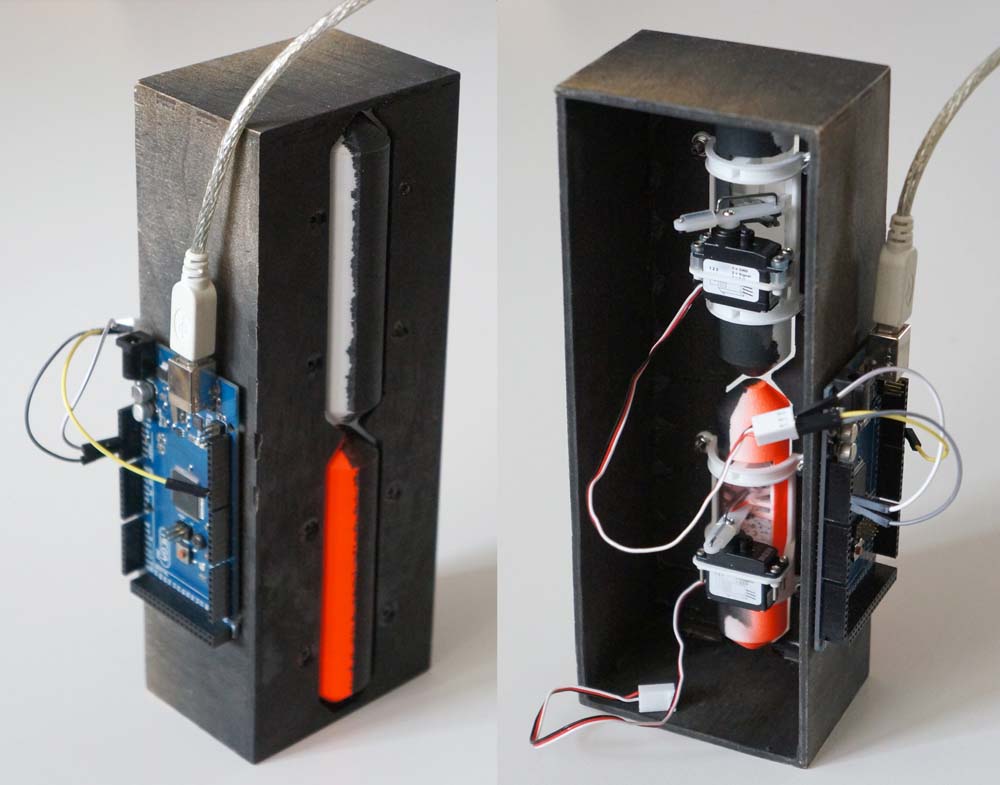 |
|||
|
|
|||
|
Sponsors: During the design phases the Danish model flyers organization (Modelflyvning Danmark) gave a contribution to this project. The 5,000 Danish kroners (670 euro) was a good help to pay for parts and components It was also a nice recognition of our work with this project The total cost of components for the Timer is probably three times higher. The really big "cost" of this project was the many hours spend in designing and building the Timer. |

|
||
|
|
|||
|
Building the mechanical timer: 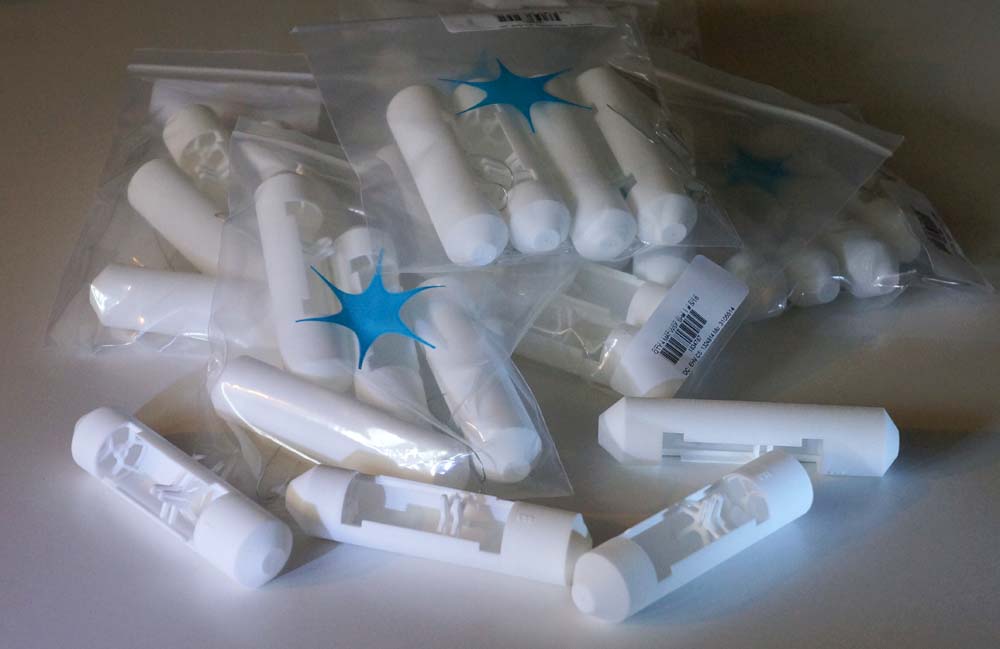 The 28 cylinders for the four 7-segments displays was 3D printed by Shapeways 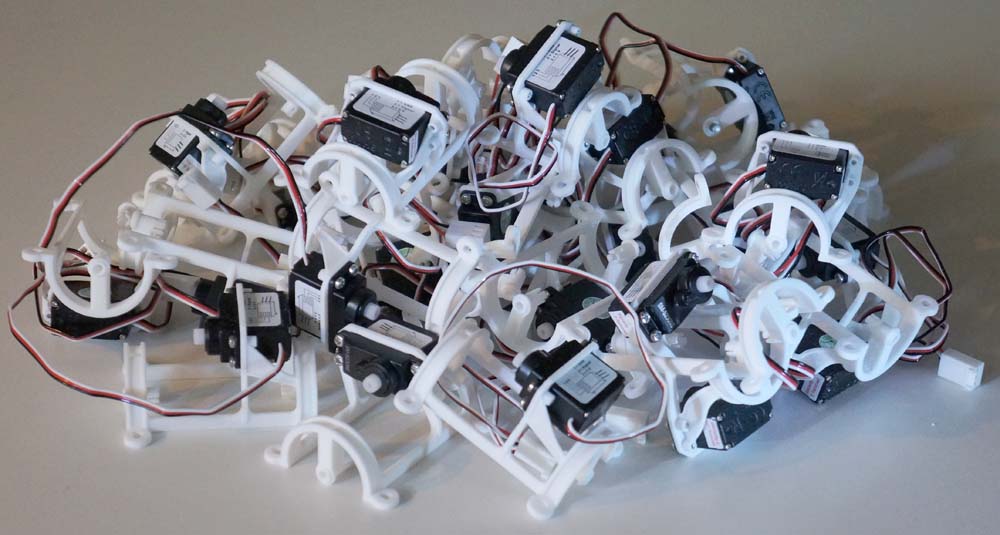 3D-printed mounts with servos 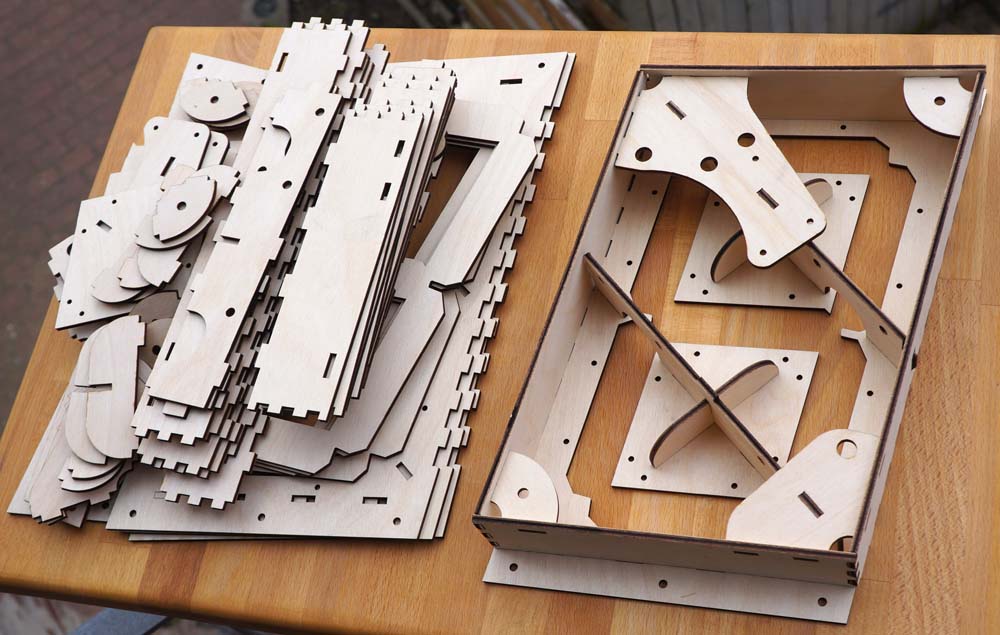 Plywood parts for the 7-segments was laser cut at a local maker shop 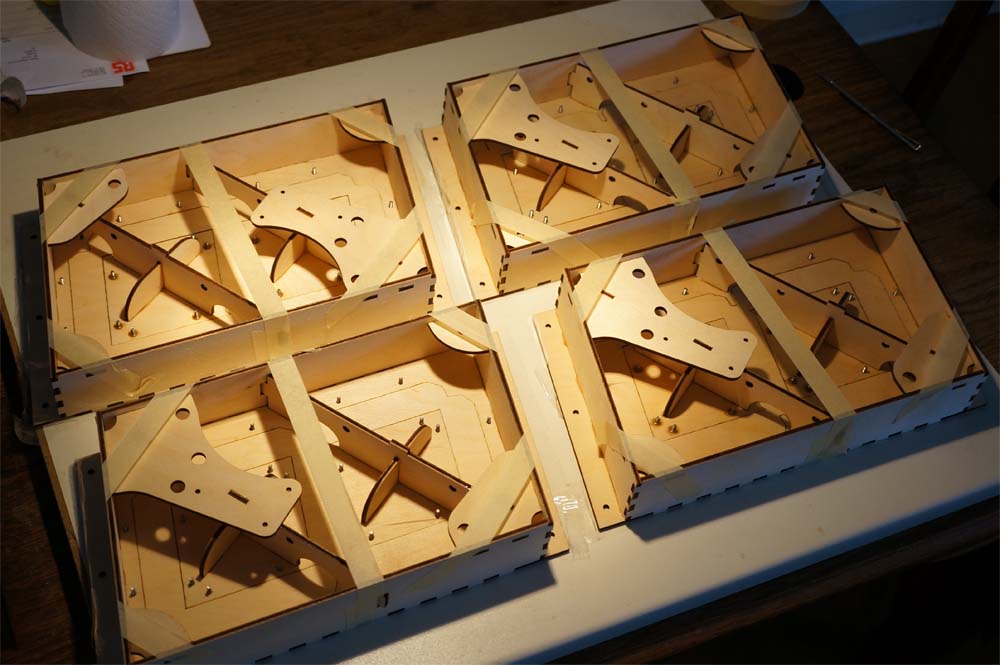 Gluing the wood parts. The use of taps and slots helpe to keep all parts in the right position 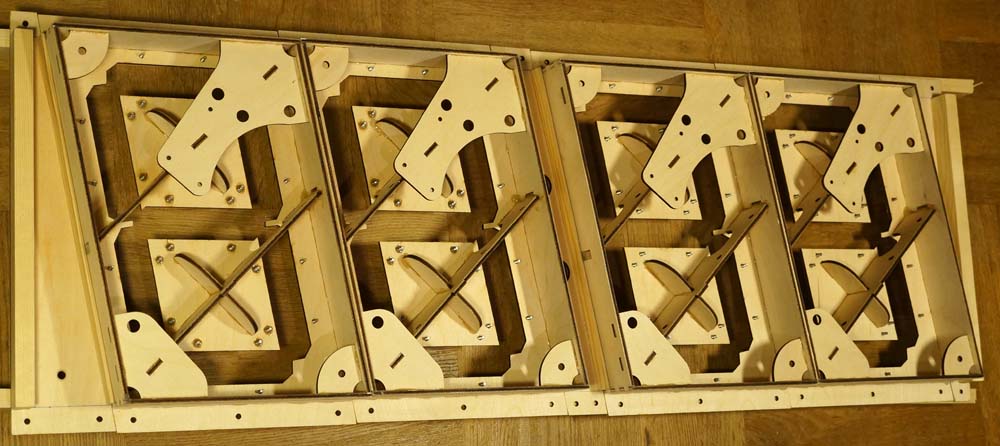 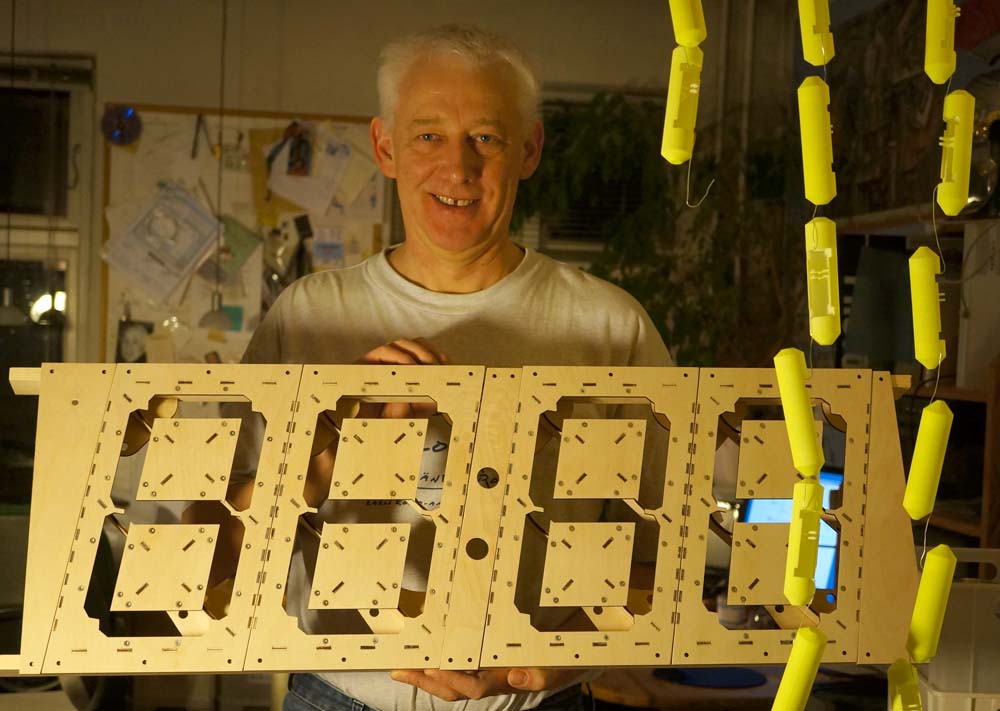 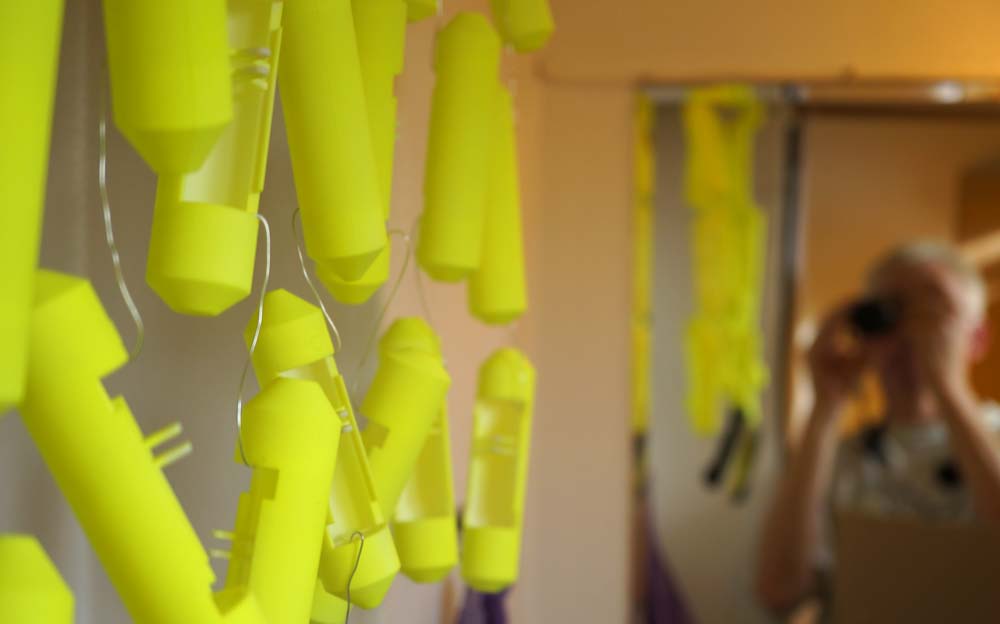 The cylinders was first spary painted with yellow flurosent paint 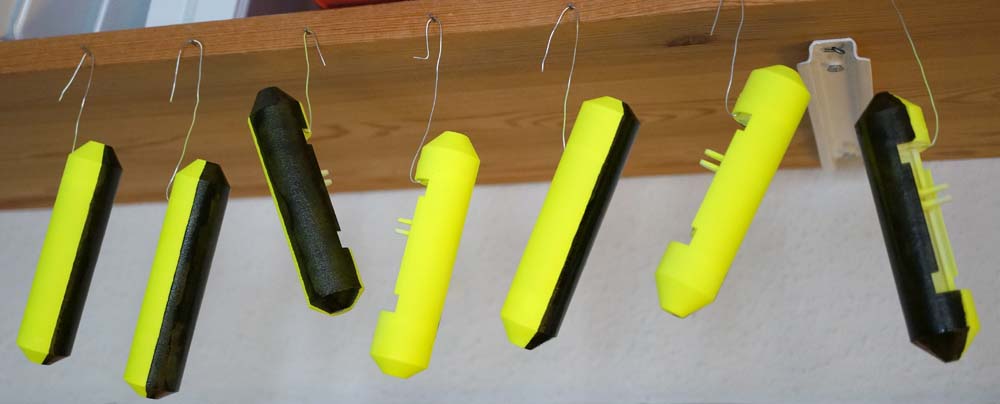 One side of each cylinder was painted black by hand 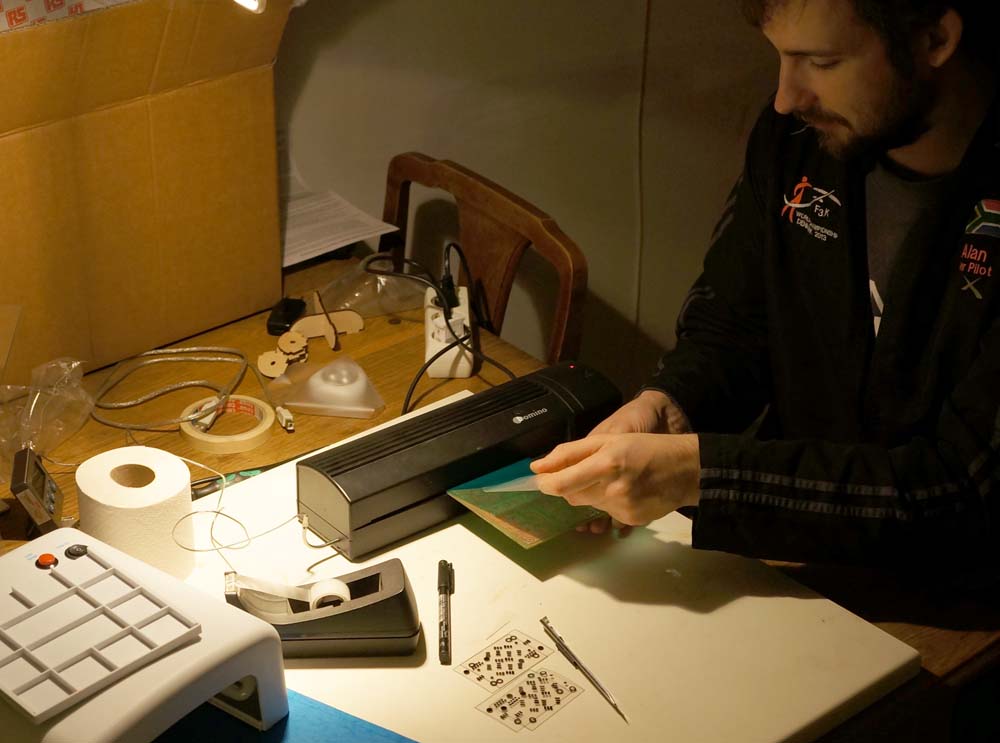 André covering the pcb boards, using a rebuild laminating machine 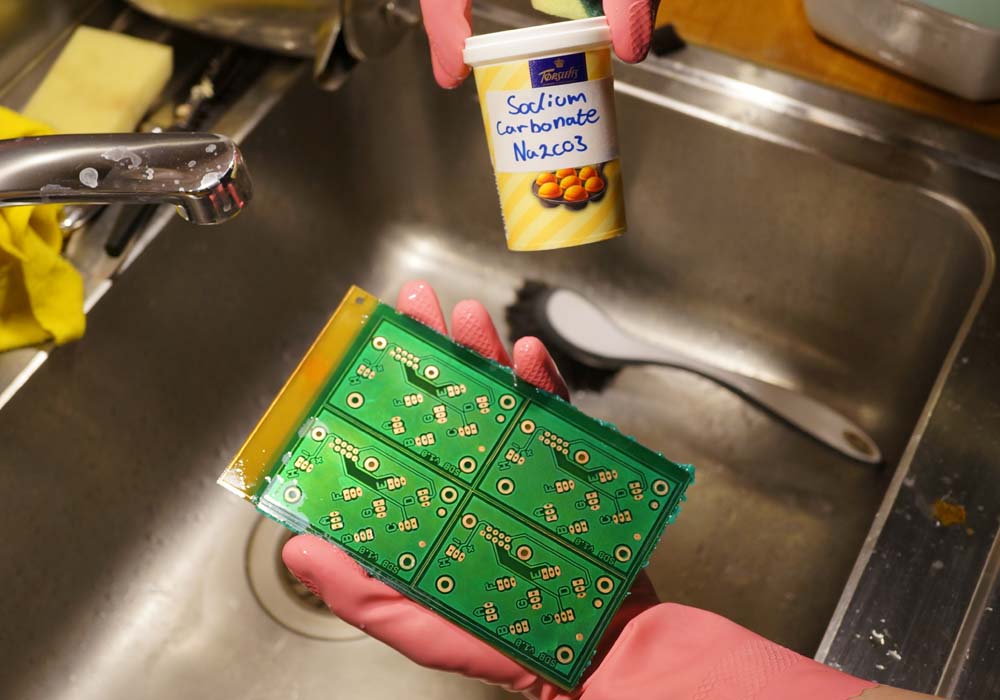 Cleaning the pcb boards with home made Sodium Carbonate 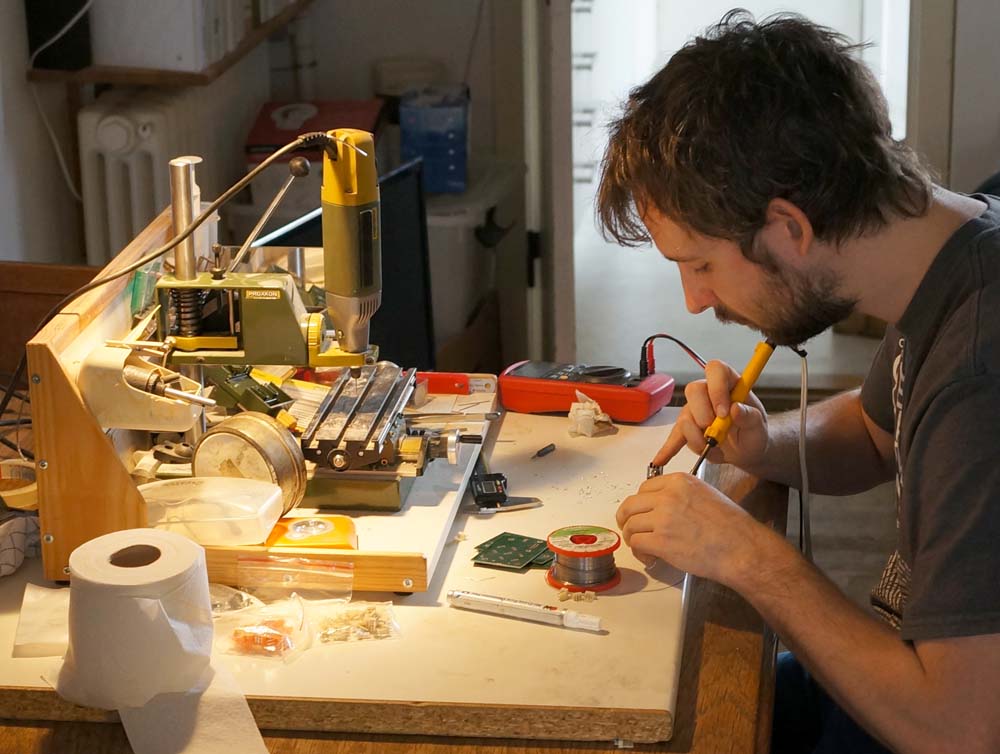 Drilling and soldering the pcb boards 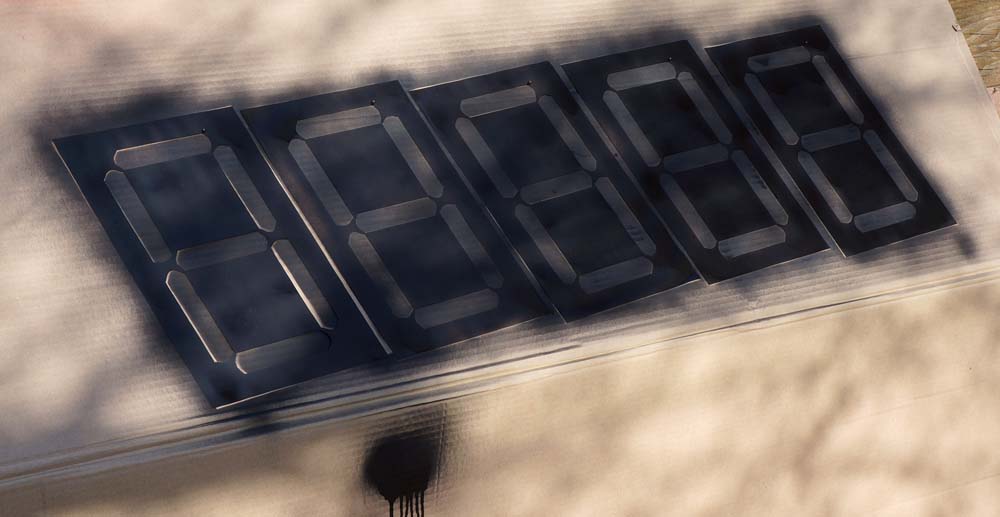 Painting the front film. One extra as a spare 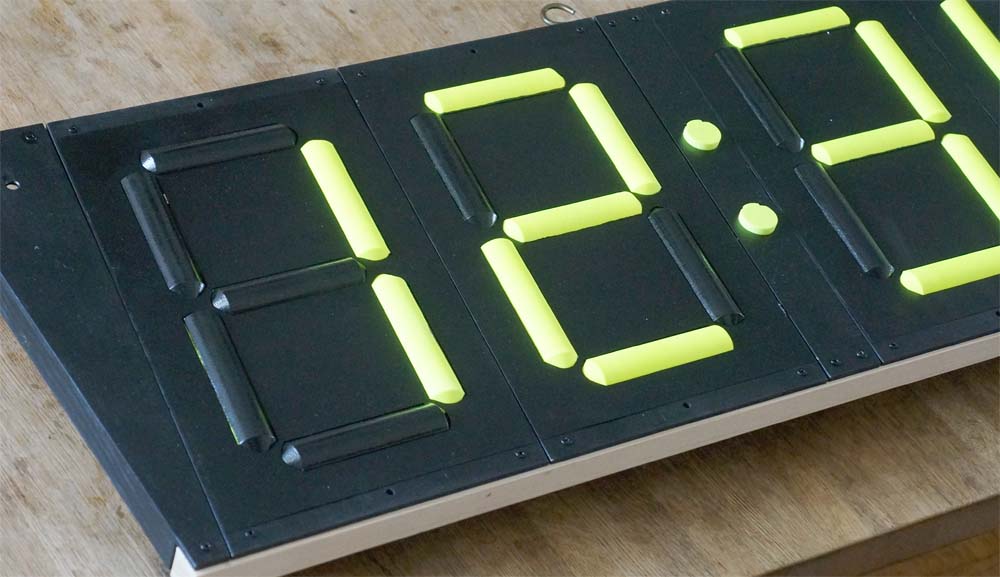 Front film mountet on the dispalay segments. You might notice that the two dots in the semicolon is made from 3D-printed back plates for FORA engines. This is the 2014 versions that have got obsolute after the new o-ring version arrived. 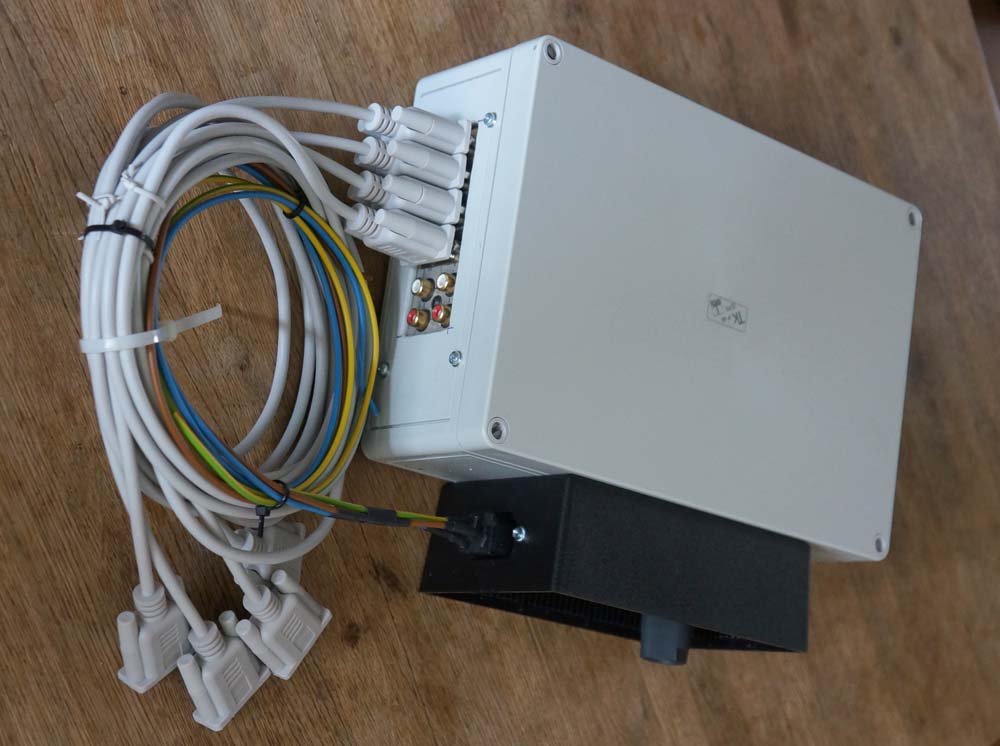 The control box for the timer. The four cabels will be connected to the four 7-segment displays 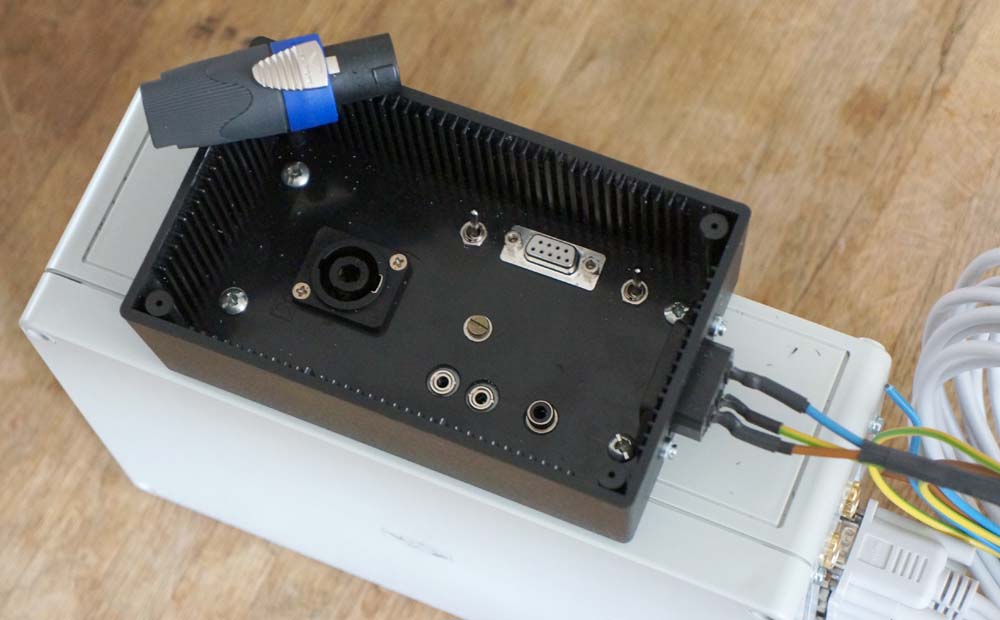 Connectors and switches at the bottom of the control box 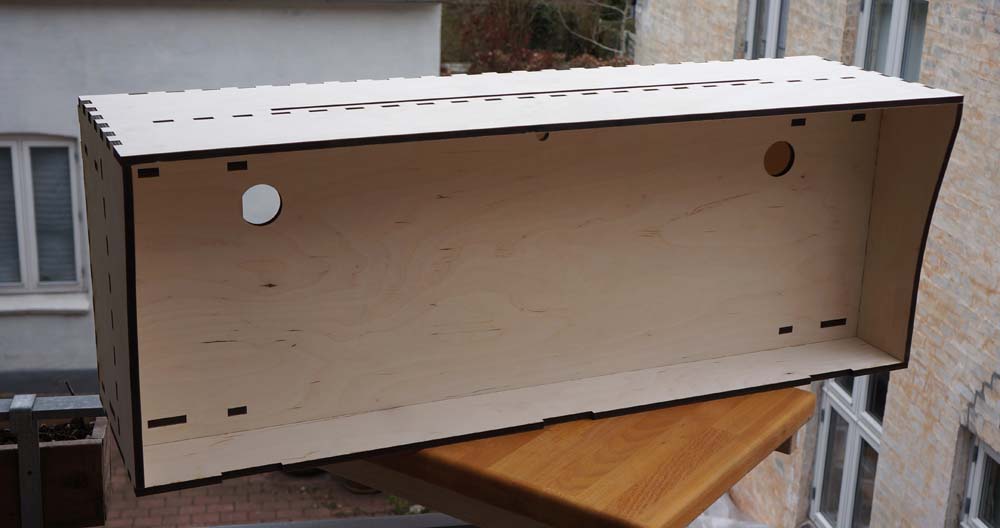 First test mounting of the box 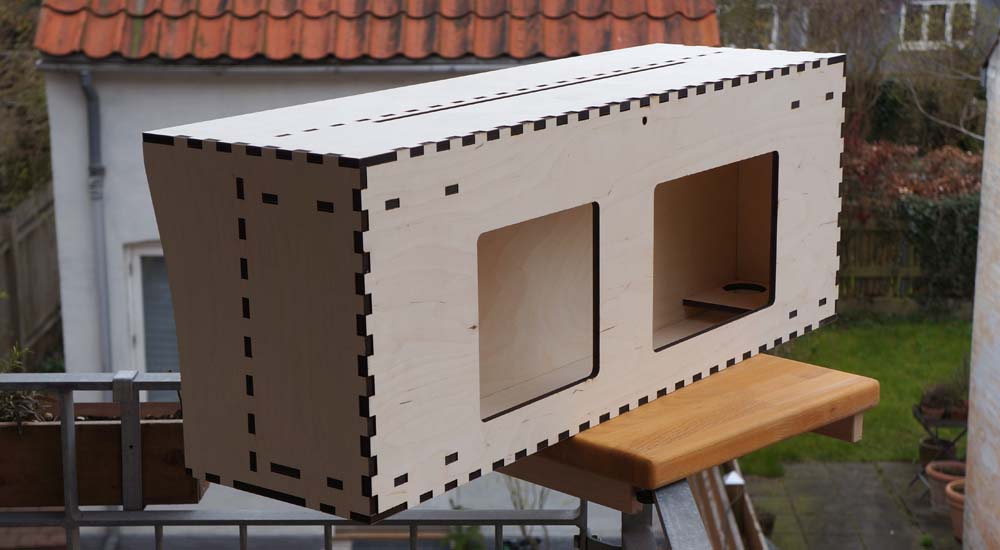 Taps and slots keep the parts in place like LEGO briks 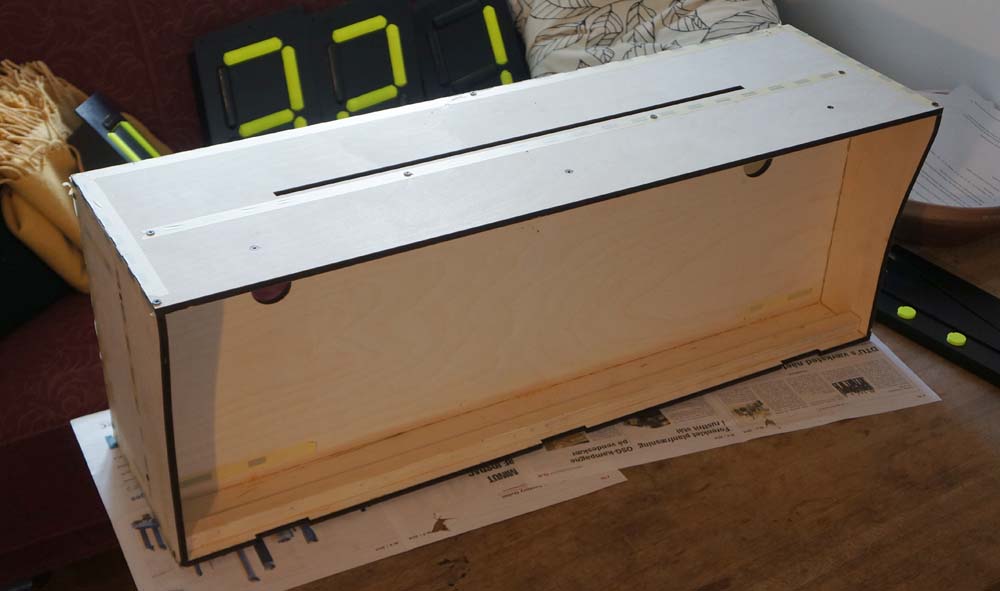 Glueing the box with epoxy 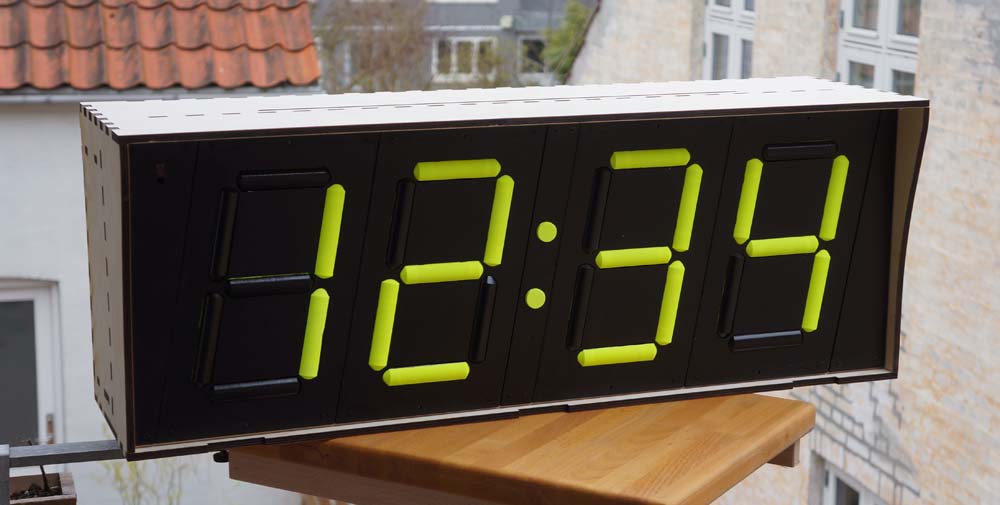 Wood boks with the 7-secments dispays 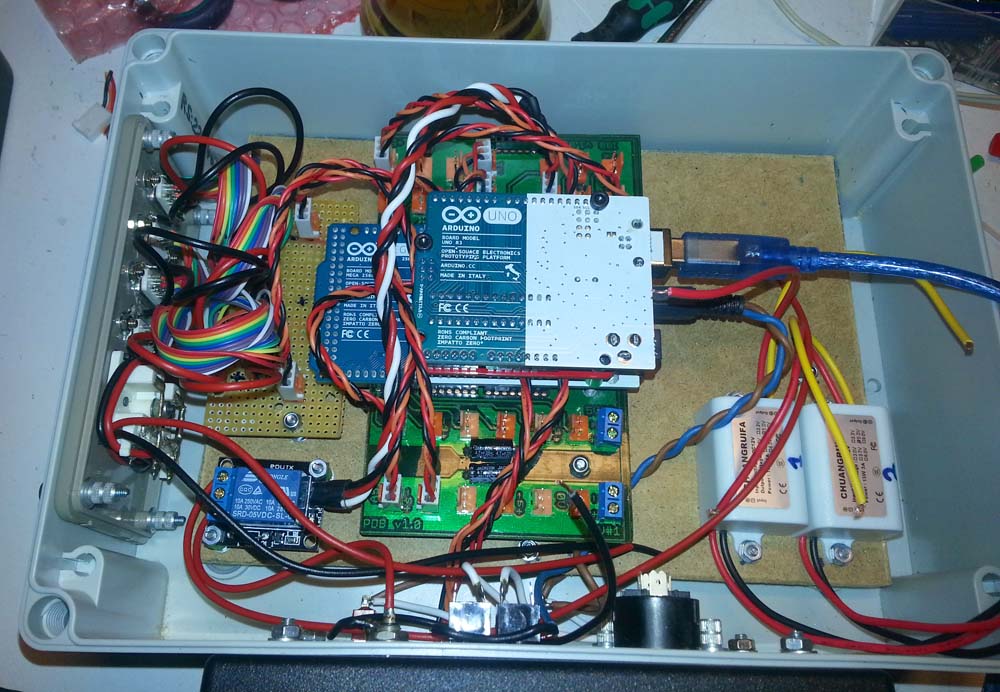 Control box inside the timer 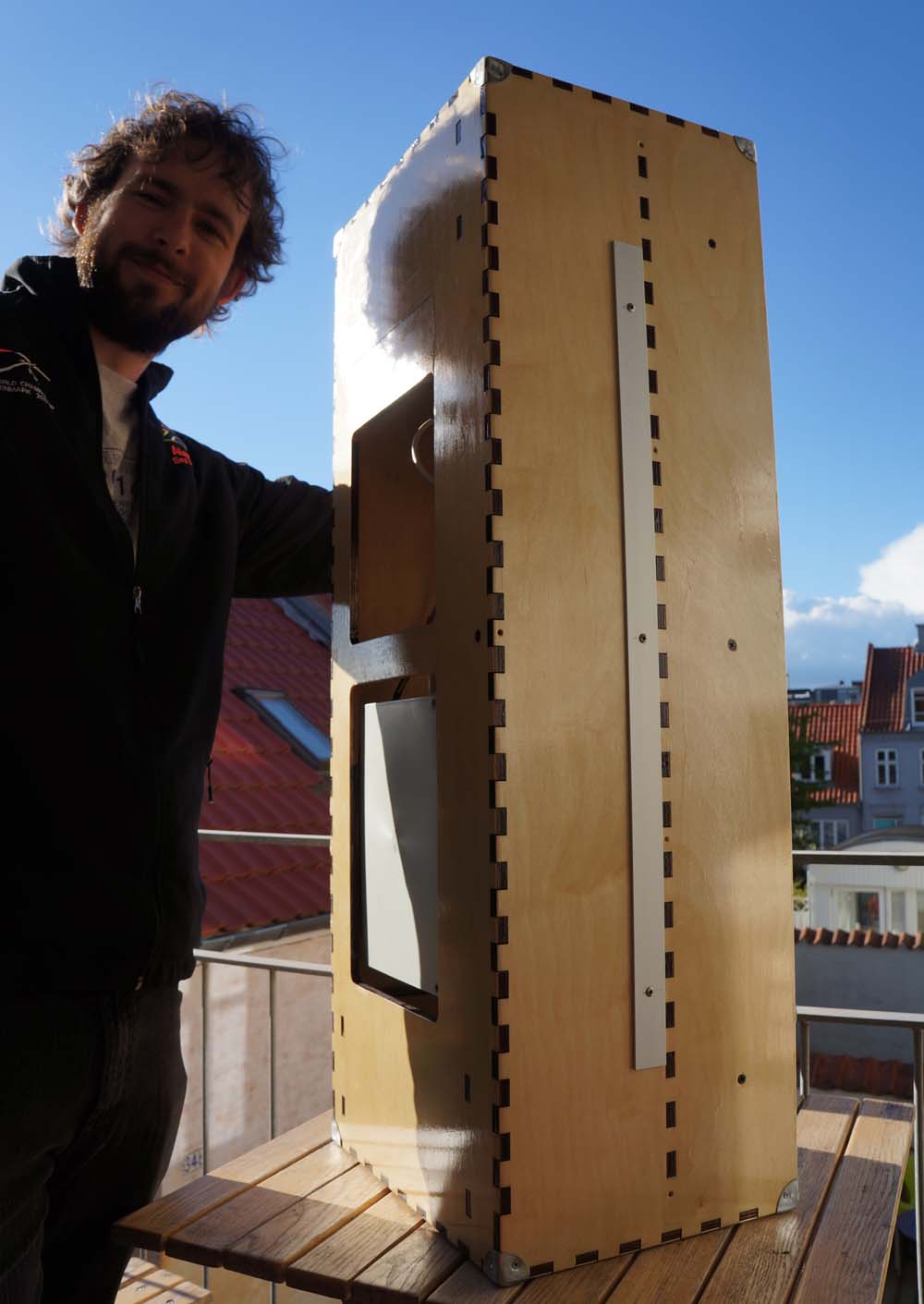 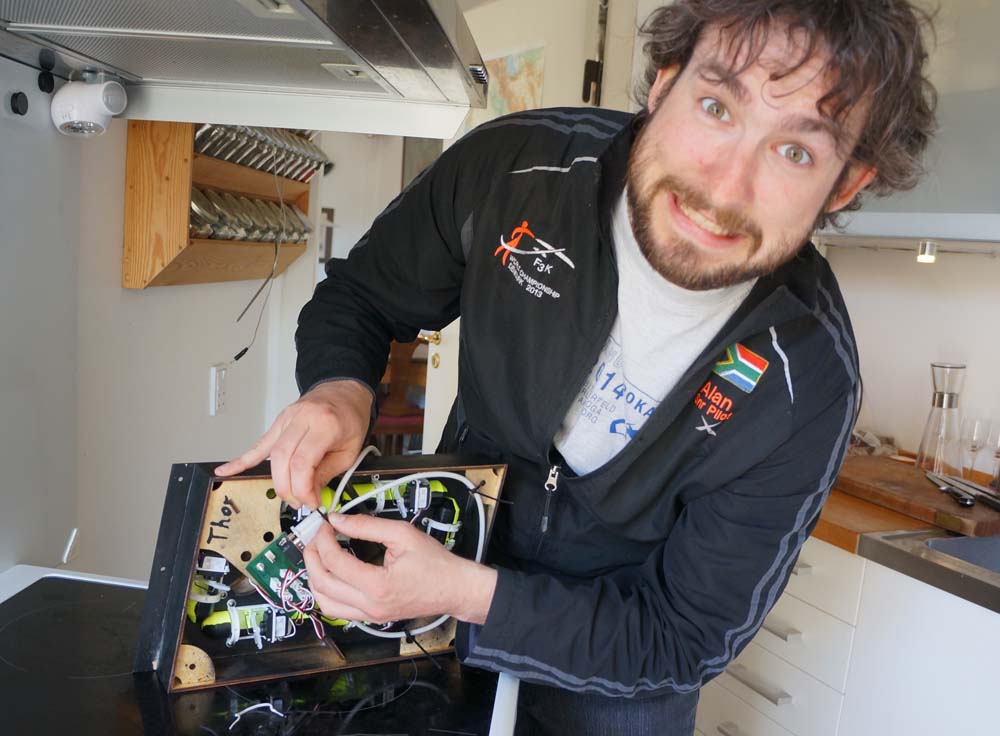 André connecting one of the 7-secments 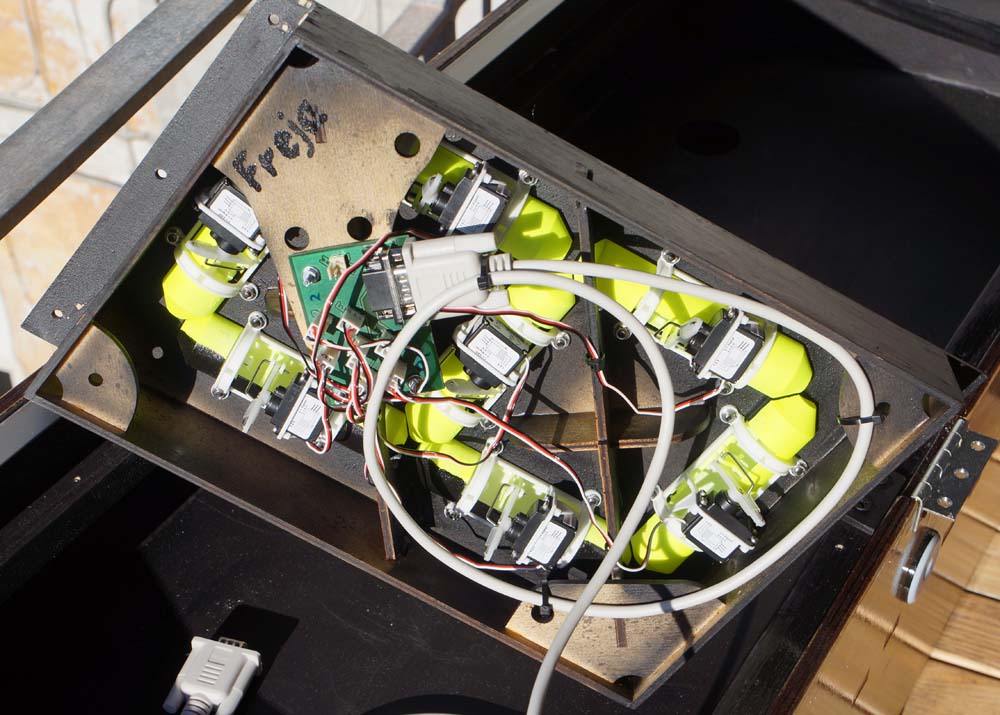 The four 7-secments can be interchanged if one of them should faile during a competition 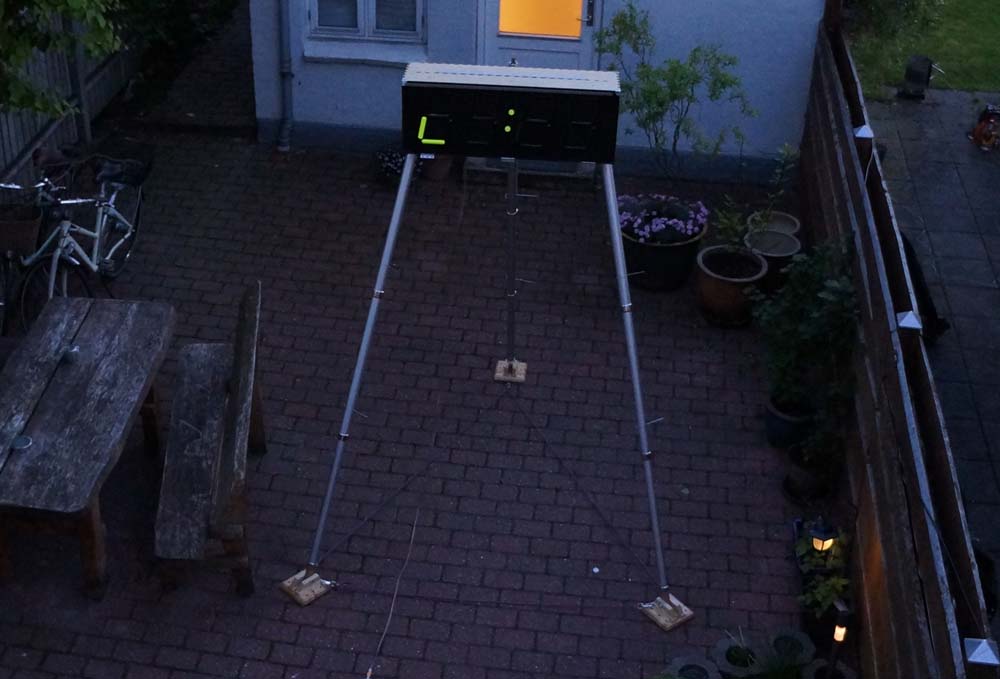 First time on its own legs |
|||
|
|
|||
|
Operation: When the Timer is connected to the power supply a switch in the bottom of the display box have to be activated to start the system. The system will first run a sort self-check by switching all 7-secments between 8 and blank. After the self-check it will write "F2D" to on the display and the Timer will now be ready to use The Timer is operated from a remote control. The remote console is a small box with four big buttons The first button has always to be pressed to use any of the three other buttons. This is to prevent an unwanted activation of Timer when the Circle Marshal is moving around in the center circle. The "Start" button will initialize the start sequence for a match. The "End" button is used to end a match when all streamers are gone or when a pilot indicate that he do not wont to continue the match. Pressing the "End" button will start the 10 second count down before the match is actually ended. In this situation the time keepers must be ready to stop the time for each pilot at the same time as the match is ended. To warn the time keepers the Timer will show the lower square in the highest digit when it starts the 10 seconds count down. In the last seconds the segments in the small square will disappear one by one until the Timer finally stops. The "Stop" button is used if pilots get disqualified or if a match has to be reflown. The Timer will stop without a count down. When the Timer has not been active for some time it will go in to "Idle Mode". This will be indicated by the segments in the two highest digits are forming a "snake" that turns around. Idle mode is also called "Snake Mode" If the Circle Master activate the "End" or the "Stop" button during the Idle Mode the Snake will change direction. The Circle Master can use this function to check the system without starting a match. When the Timer have not been active for a long time it will write "F2D" on the display and go into "Sleep Mode" |
 Pavol Barbaric with the remote control at the competition in Sebnitz 2015 |
||
|
|
|||
|
First competition: The Timer was used for the first time at the Danish World Cup competition in Aalborg, Denmark 2015 Pilots and officials was quick to understand and use the Timer. Spectators enjoy the extra information the time. This made it easier to see how the pilots adjusted their tactics during a match. At the end of a match it was easy to follow intensive fight to win or defeat a last defining cut. |
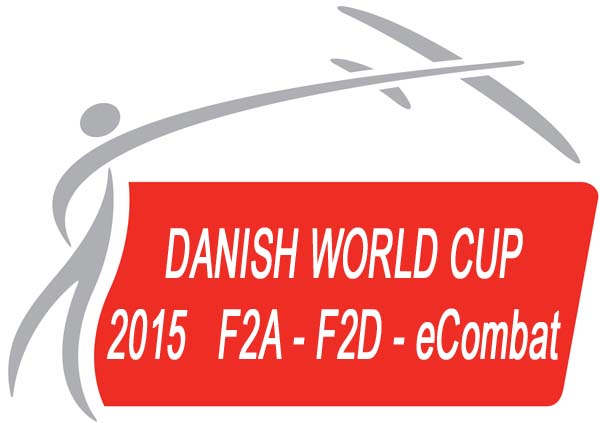
| ||
 The Timer was ready for the Danish World Cup 2015. André Bertelsen and Henning Forbech 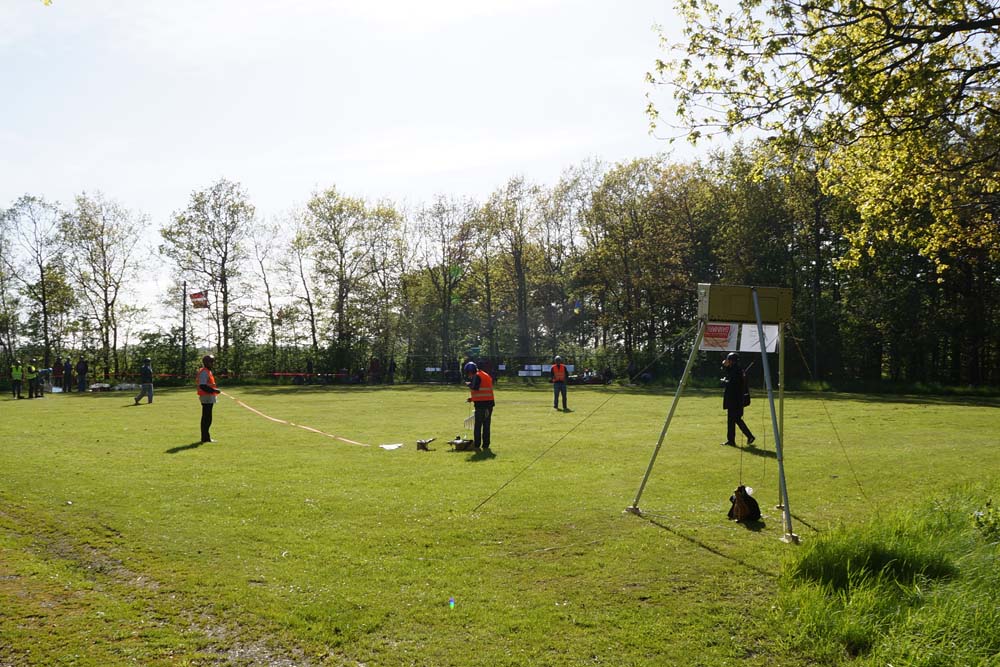 The Timer in action during the Danish World Cup 2015 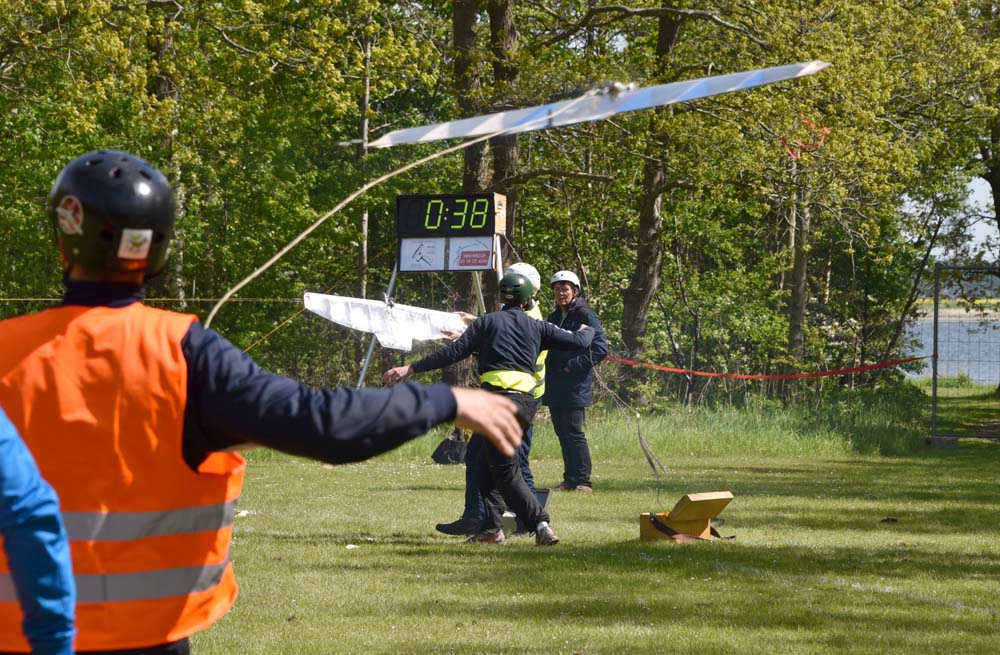 The big display made it easy for all to follow the time during the competition Photo by Bjarne Schou |
|||
|
|
|||
|
Sound System: The rules state that all signals shall be both acoustic and visual so we had to ad a speaker to the Timer. The microcomputer will announce the start and end of the match and it will make the countdown. |
Rule book: 4.4.9.a |
||
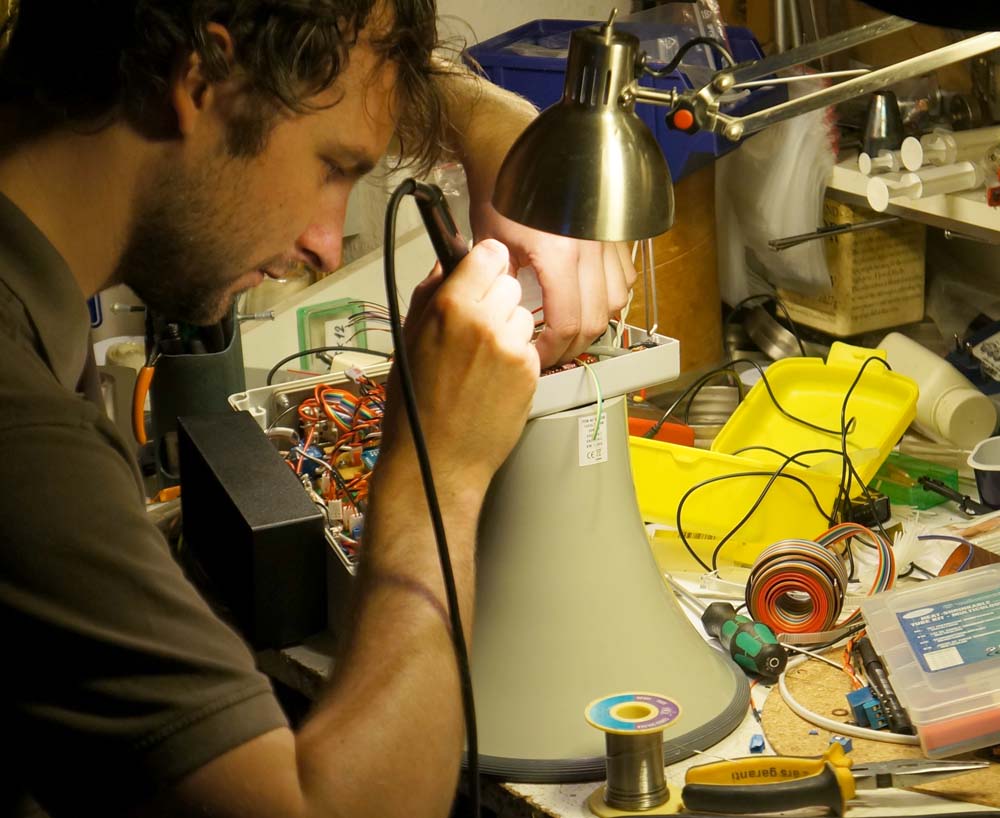 André Bertelsen working on the sound system 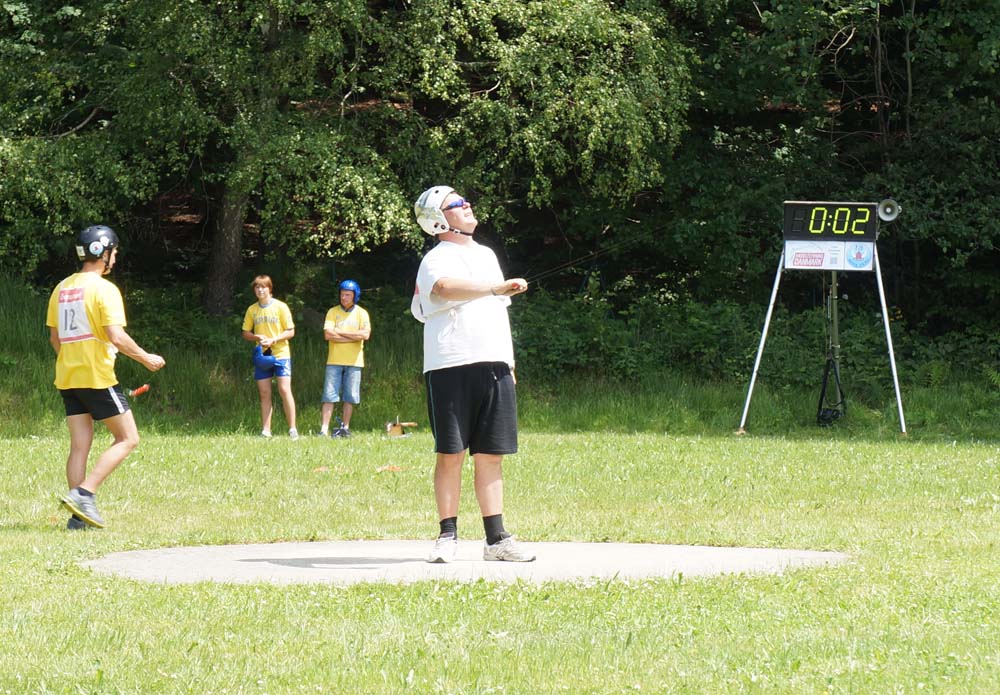 The Timer with sound system was first time used at the German World Cup in Sebnitz 2015. 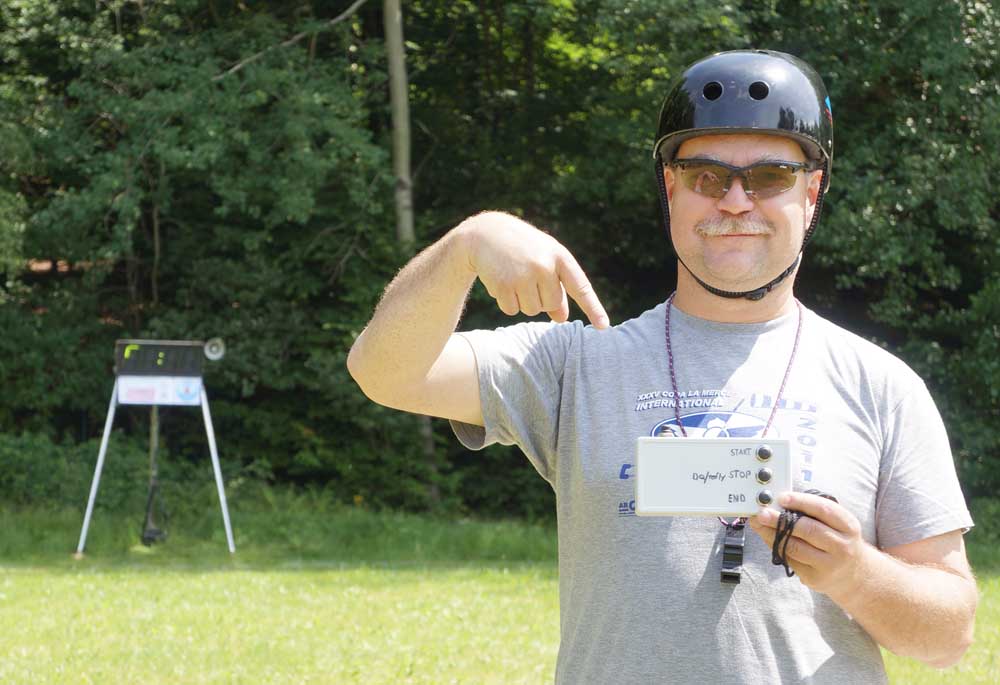 Pavol Barbaric with the remote control at the competition in Sebnitz 2015 |
|||
|
|
|||
|
Competitions in Riga: The Combat Timer was used for both the Latvia World Cup and the Lithuania World Cup in Vangaži 2015 After the competition in Sebnitz the Lithuanian pilots was very kind to give the Timer a lift to Riga. This made it possible to use the Timer at the two competitions in Vangaži.(Vangai) |
FAS Forum Latvia and Lithuania World cups website |
||
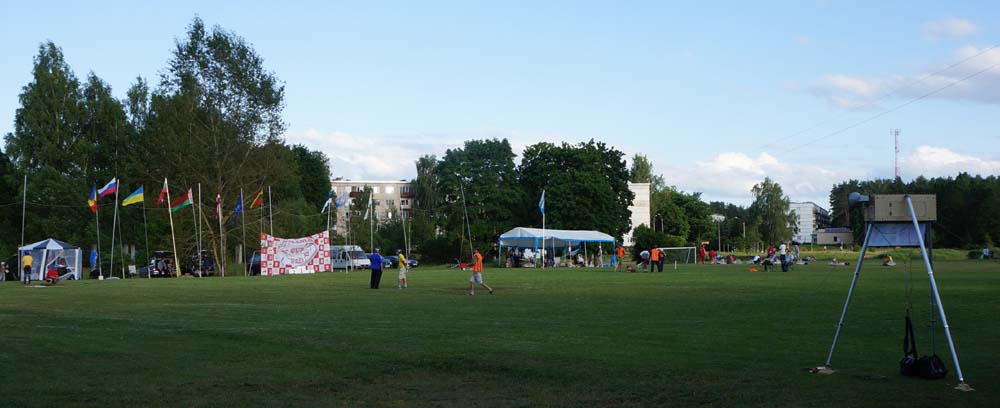 The Combat Timer close to the flying circle in Riga 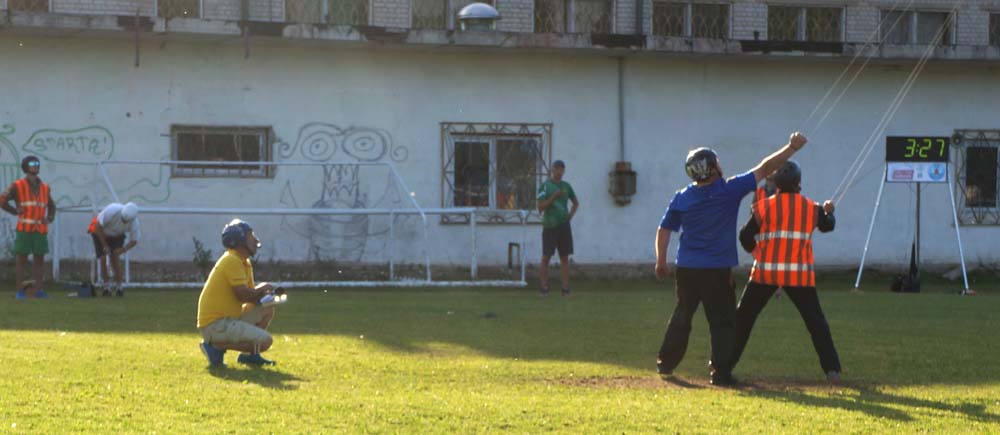 The Combat Timer in action. Center Marshal (Nikolay Vasilkov) with the remote control 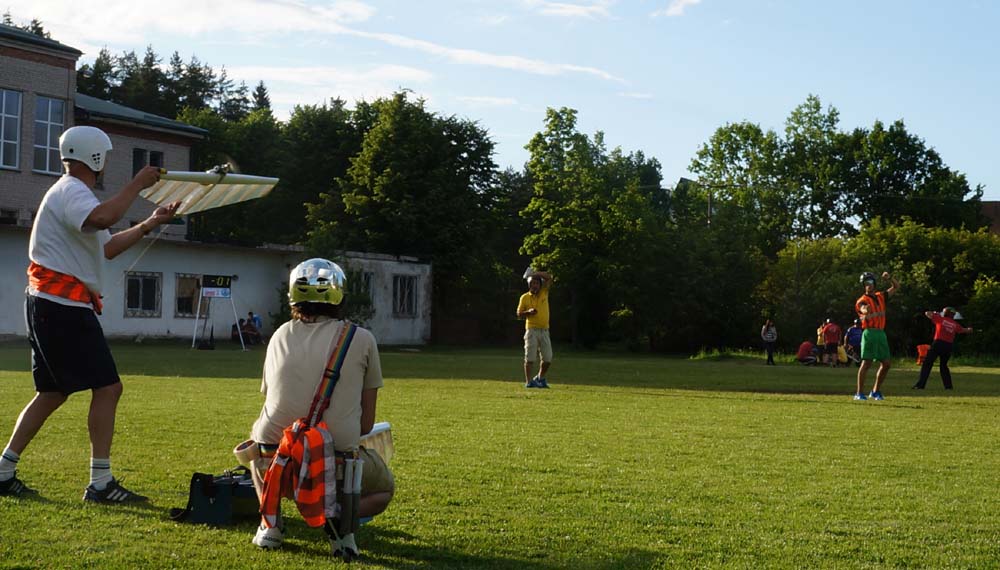 Last second before take-off. You can see the Timer between the two mechanics "-:01" indicate that the Timer is counting down. When the match starts the Timer will show "0:00" and start a count up |
|||
|
|
|||

The Combat Timer did also attend to the European Championships 2015 in Bulgaria. The Lithuanian pilots again helped by giving the Timer a lift from Riga to Bulgaria. Big thanks for your help! 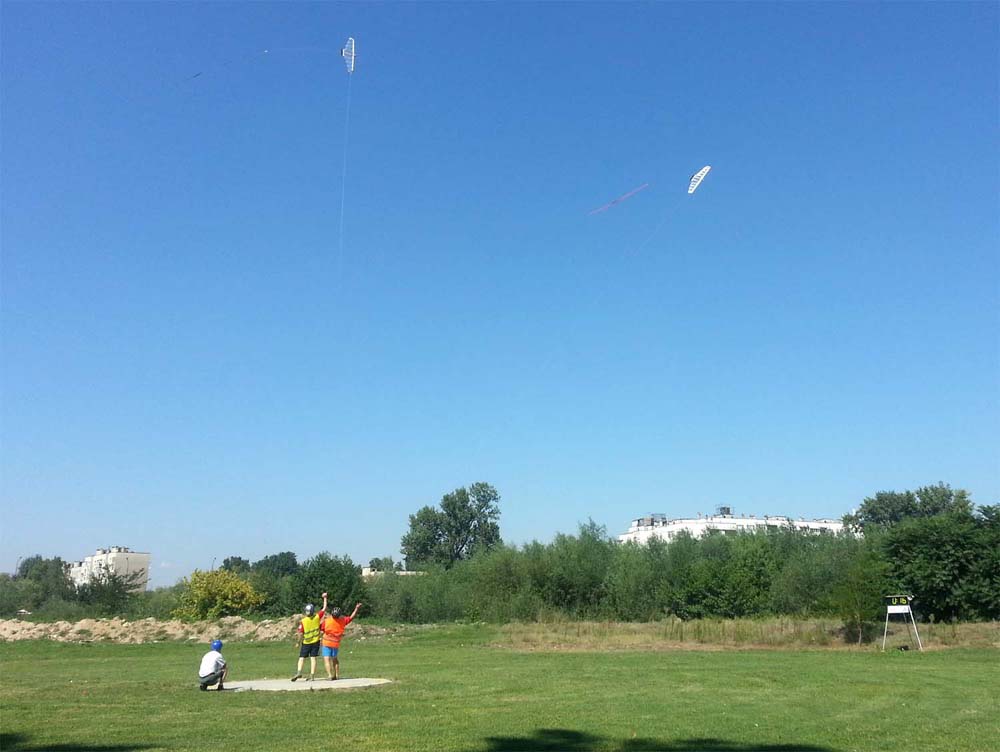
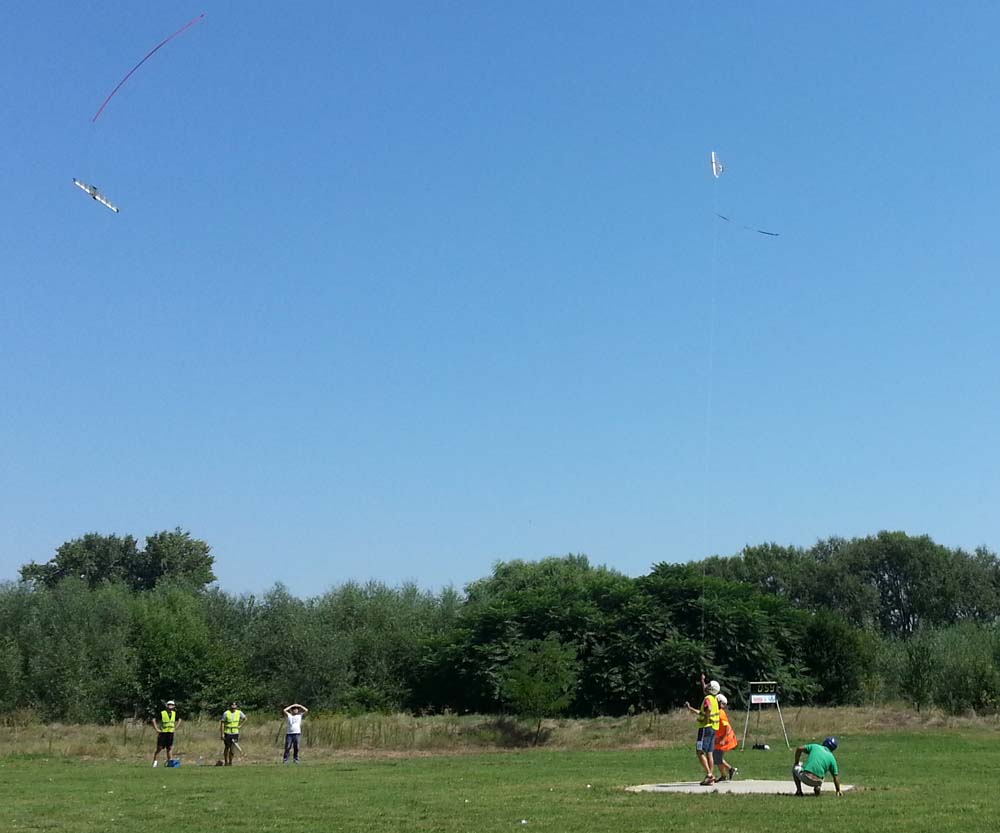 The Timer at work on the flying field, EC 2015 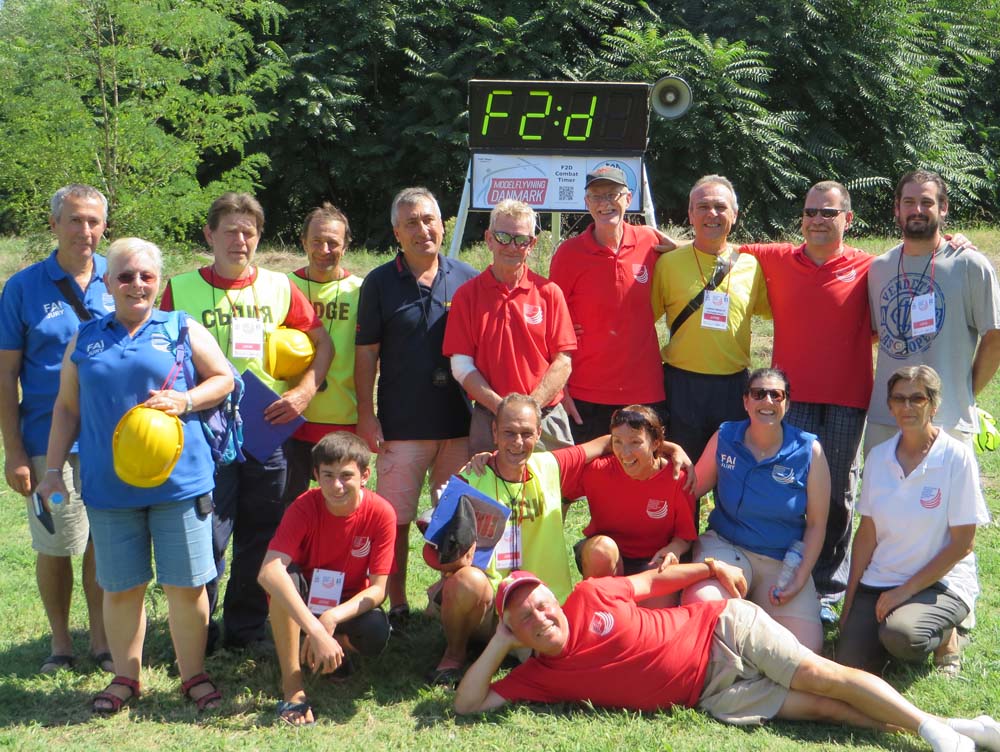 Officials at the combat circle in Pazardzhik 2015 After the European Champs Rudi Königshofer gave the Timer it a lift back to Austria. From Austria to Denmark the Timer will test FedEx and its new flight case. Big thanks to Rudi for helping with the transport back to Denmark 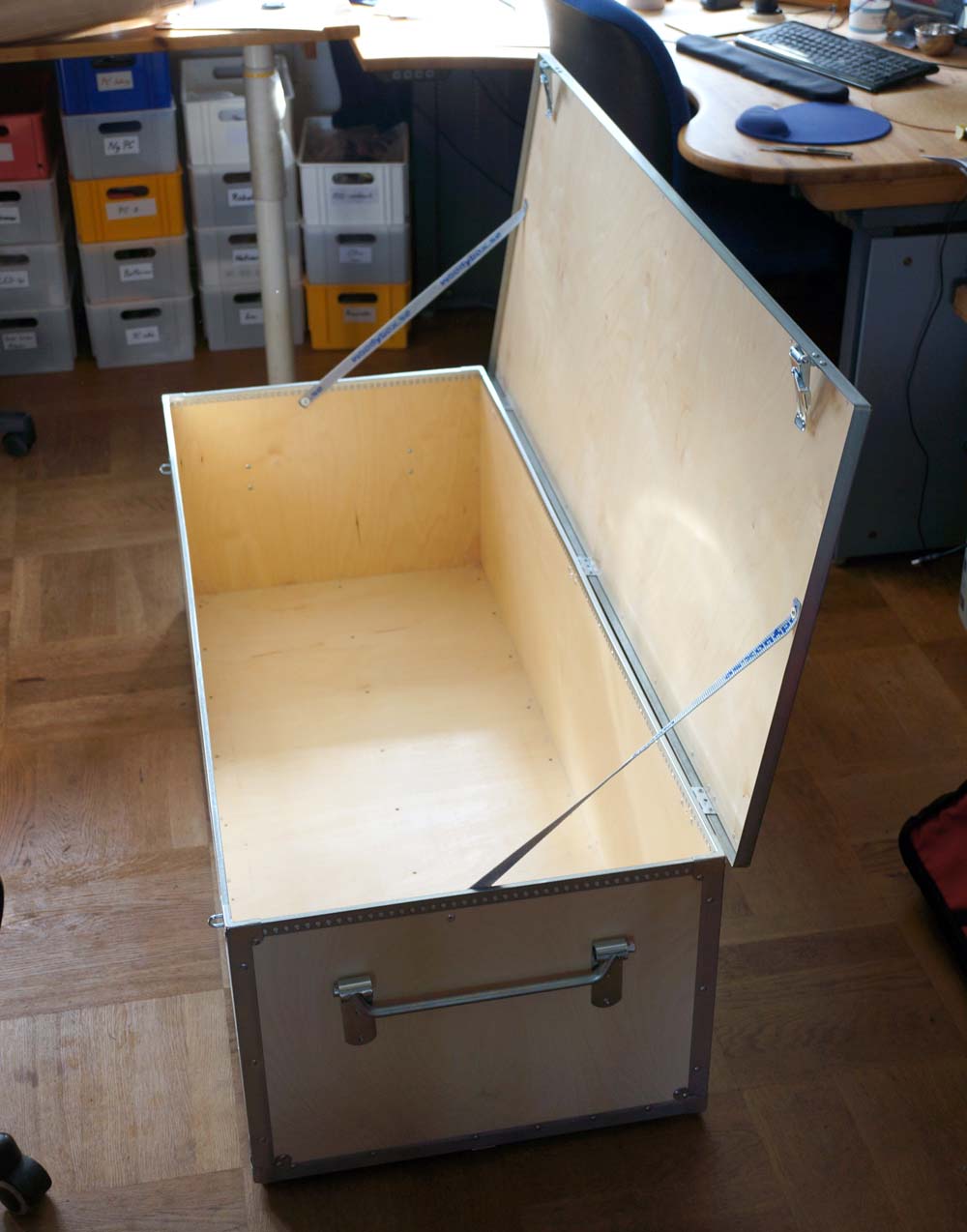 |
|||
|
|
|||
|
World Air Games: Dubai, 5-9/12 2015 The Timer have also been invited to the World Air Games in Dubai this year André Bertelsen will participate in the World Air Games. He will stand by for support on the Timer during the competition |

|
||
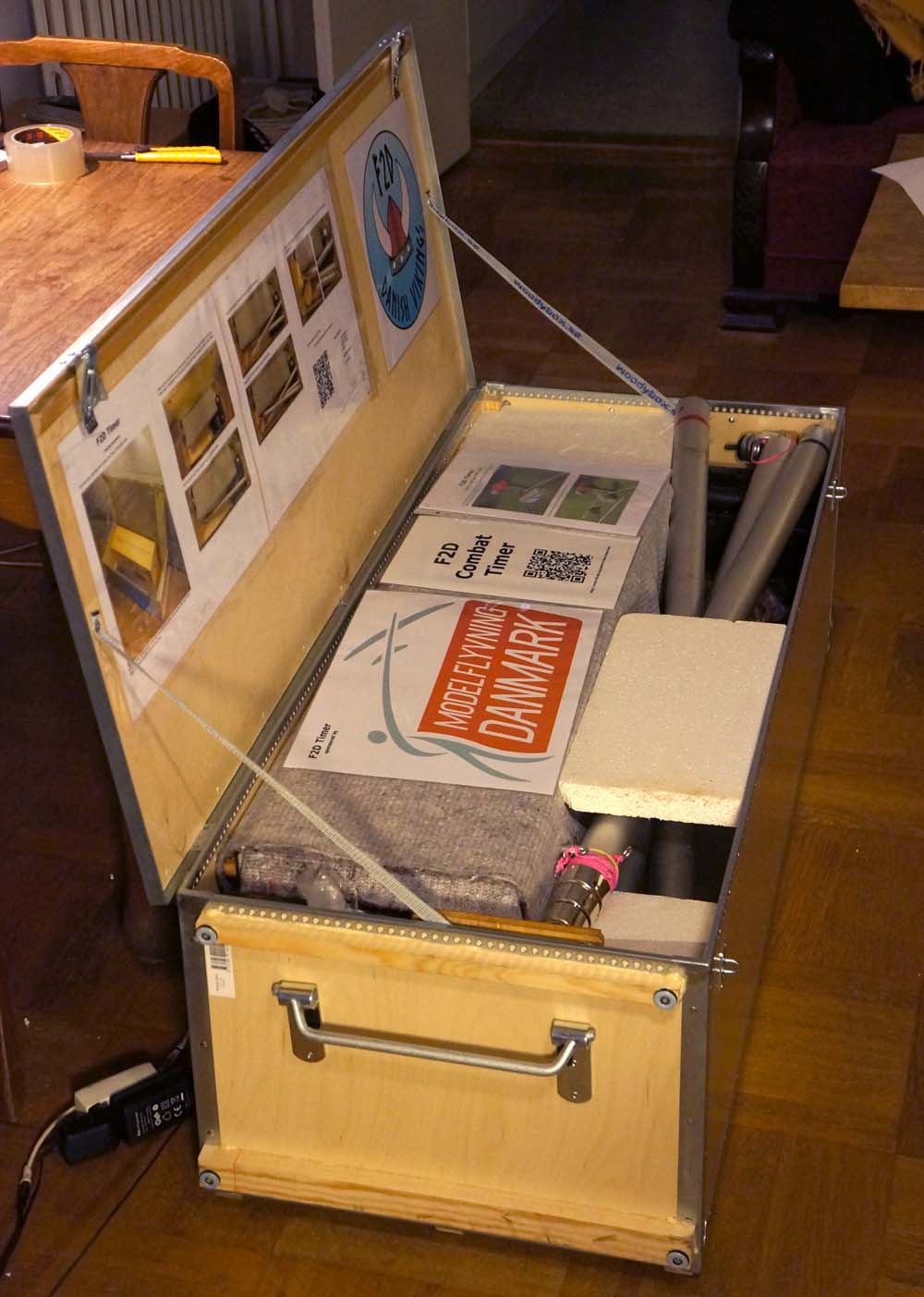 The Timer is ready to go to Dubai for the World Air Games 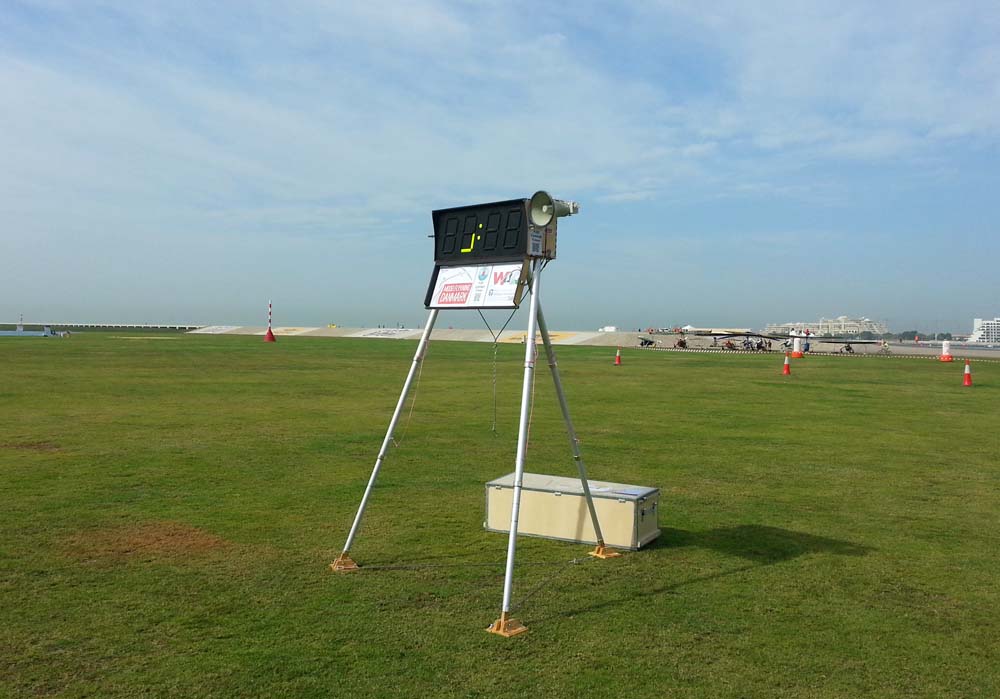 Timer and flight case at the flying field in Dubai 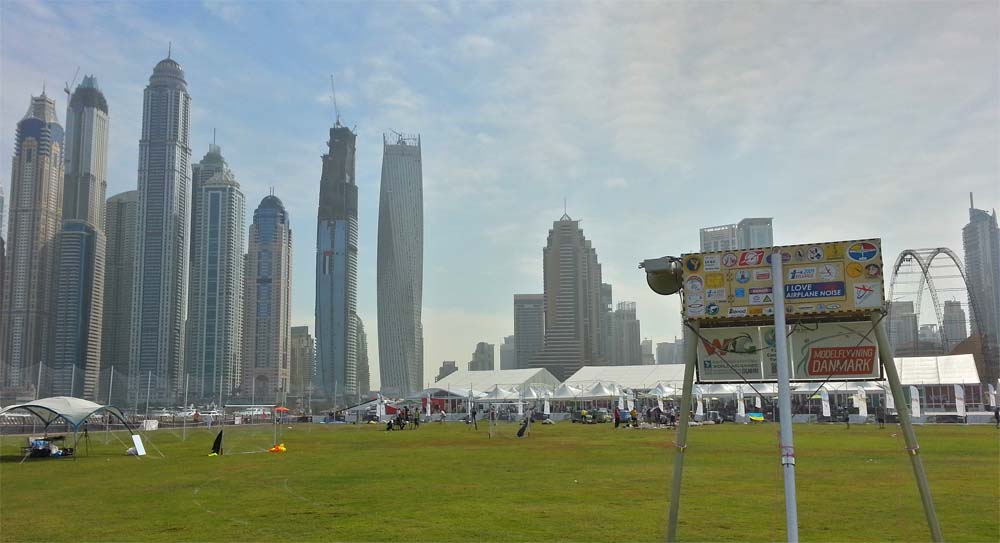 The Timer at the flying field in Dubai, Pilots and Dubai skyline in the background  Pilots and officials at the World Air Games in Dubai 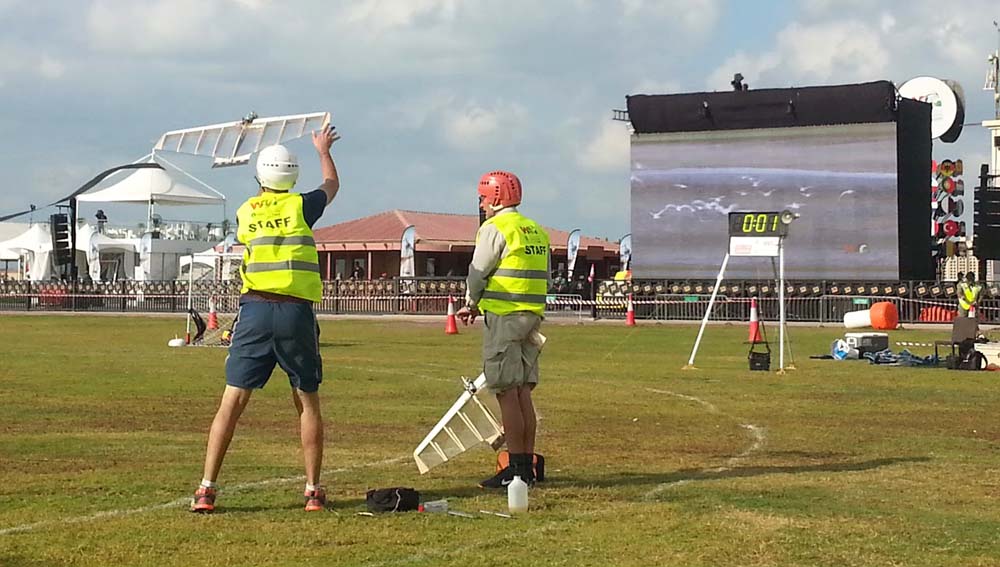 Time for action! A realy big display in the background 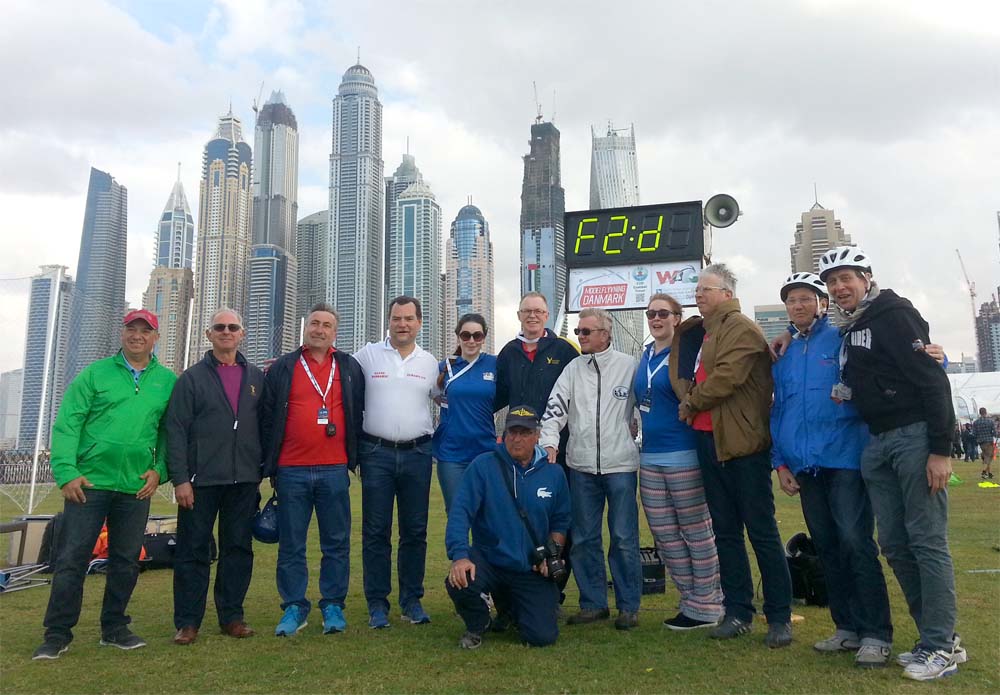 Judges, Officials and Timer in Dubai
Judges, Officials and Timer in Dubai
|
|||
|
|
|||
|
Winter update: Denmark, 26/3 2016 This winter we gave the Timer an small update A new radio module for the remote control, a stronger amplifier for the sound system and a general update to the program. The "Flag Module" was also installed and tested. |
Next chance to see the Timer in action:  |
||
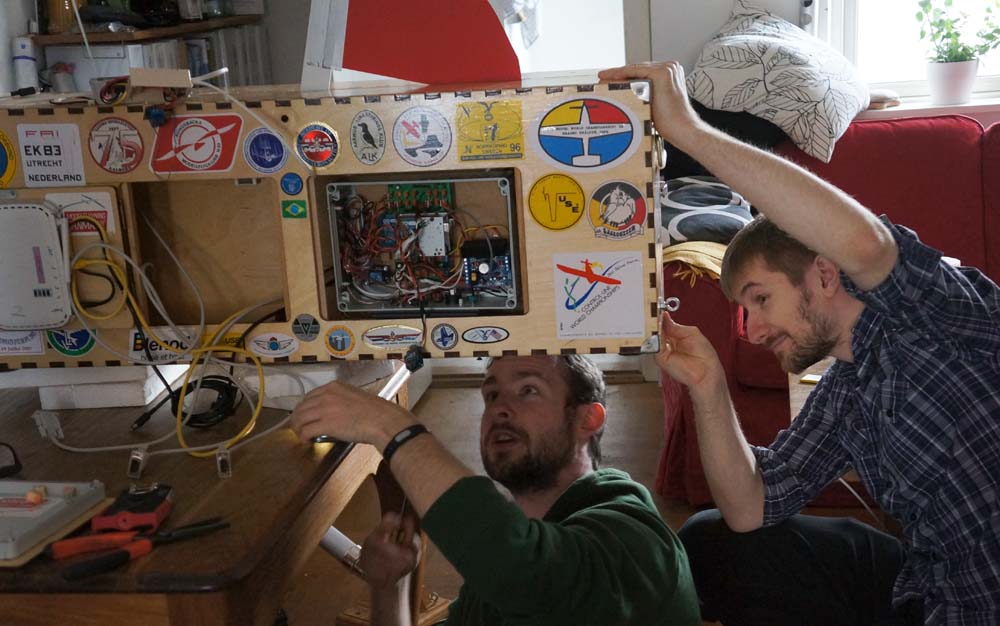 André Bertelsen and Mikkel Wessel working on the Timer. Mikkel made the program for the Timer. At the top of the Timer box you see a beta version of the "Flag" 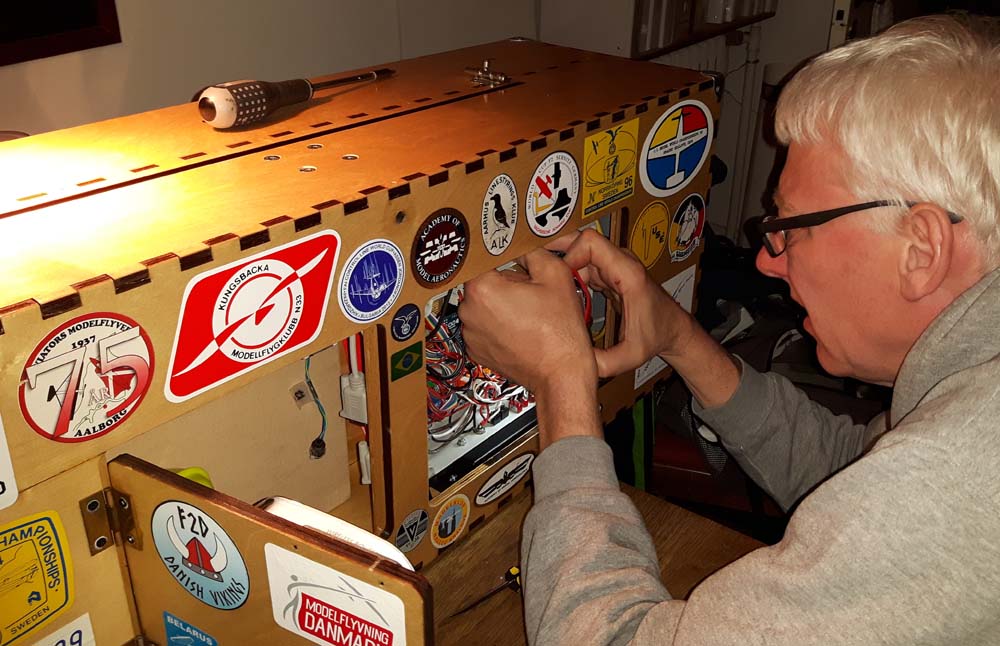 Henning Forbech working on the Timer 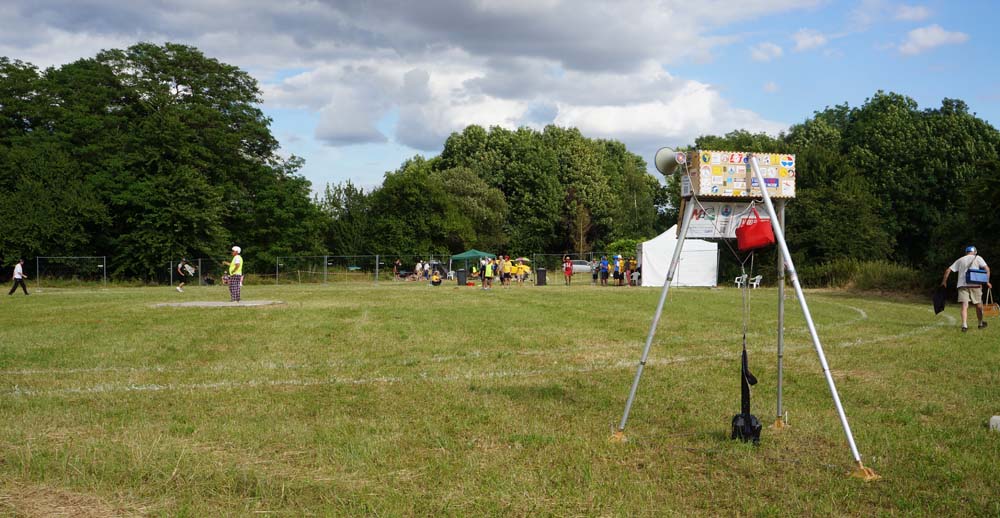 Timeren var selvfølgelig med til de to World Cup konkurrencer i Landres, Frankrig |
|||
|
|
|||
|
Future update: We are already now working on some new features for the next update of the Timer. The Timer will have a build in Wi-Fi router and a webserver. This will let the Timer provide pilots and spectators at a competition with information via a local net. We hope to integrate this webserver with the computer program for running the competition. This would then let people at the flying field be able to see the draw and view results from there smart phones. The Timer already has a build in web camera and in the future we hope to be able to record matches and publish them together with the results from the competitions. A webserver in the Timer will also make it possible to exchange photos and videos at the competition. If we can get a local connection to the internet we also hope to be able to stream all the information from the Timer to the internet. All information and results will then be made available online in real time. If we can get enough bandwidth we will even be able to stream live video from the Timer The Timer is designed for use in more classes than just combat. The control box already has an interface that will make it possible to run the display from an external computer. This will probably be used first time at a F3K competition in Denmark next year. |
Contributions are welcome: If you have ideas for other features you are welcome to contribute to the development of the system. You are also welcome to help developing some of the features described here |
||
|
|
|||
|
|
|||
|
Permalink:
https://www.f2d.dk/equipment/timer/timer.htm
- Public domain -
Spell checking doc
|
|||